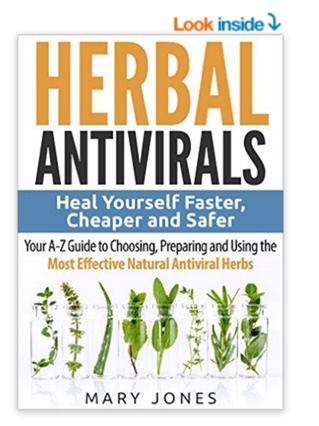HERBAL ANTIBIOTICS
What BIG Pharma Doesn’t Want You to Know
How to Pick and Use the 45 Most Powerful Herbal Antibiotics for Overcoming Any Ailment
By Mary Jones
Copyright© 2016 by Mary Jones – All rights reserved. Printed in the United States of America.
Copyright: No part of this publication may be reproduced without written permission from the author, except by a reviewer who may quote brief passages or reproduce illustrations in a review with appropriate credits; nor may any part of this book be reproduced, stored in a retrieval system, or transmitted in any form or by any means – electronic, mechanical, photocopying, recording, or other – without prior written permission of the copyright holder.
The information in this book is true and complete to the best of our knowledge. All recommendations are made without guarantee on the part of the author. The author disclaims any liability in connection with the use of this information.
First Printing, 2015 – Printed in the United States of America
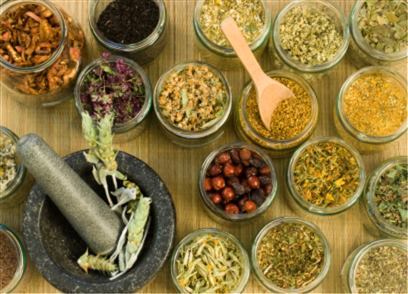
“Healthy people eating healthy food should never need to take an antibiotic”
- Joel Fuhrman , American author, physician, speaker
TABLE OF CONTENTS
Chapter 1 – Controversial Facts About Bacteria
Chapter 2 – Antibiotic Resistance
Chapter 3 – Eye-Opening Alternative Medicine Statistics
Chapter 4 – Usage of Antibiotics – All You Need to Know
Chapter 5 – How to Fight Infections Naturally
Chapter 6 – Top 45 Wondrous Herbs
Chapter 7 – Little Known Herbal Remedy Recipes
Chapter 8 – Herbal Remedies for Common Ailments
INTRODUCTION
Herbal antibiotics – among other medicines – have been used by healers for centuries to ward off a wide range of ailments. These natural remedies have steadily become more popular in recent years, and are very close to becoming a mainstream treatment . This is because bacteria have become resistant to man made products, and it’s only by returning to the more natural ingredients, that we can build up immunity to them.
This guide will look at how to ward off illness and infection using these herbal remedies , and the abundance of benefits that you will experience from switching. Once you have read all of the data contained in the chapters below, you will never look back!
An antibiotic has been defined by medicinenet.com as; “A drug used to treat infections caused by bacteria and other microorganisms. Originally an antibiotic was a substance produced by one microorganism that selectively inhibits the growth of another. Synthetic antibiotics, usually chemically related to natural antibiotics, have since been produced that accomplish comparable tasks.”
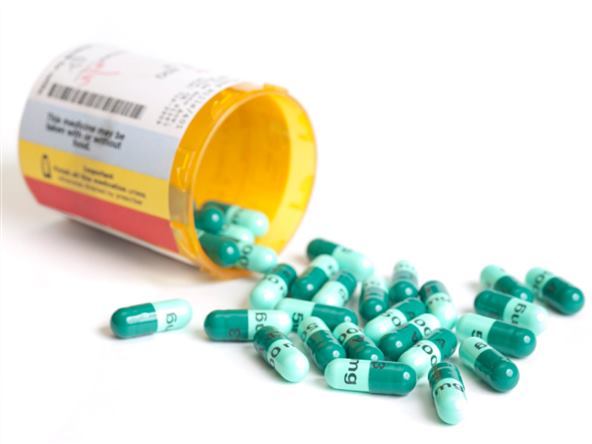
Antibiotics were originally compounds made from all natural ingredients; before they became the liquid or pill we know them as today. There are many common ingredients in these herbal medications – ones that you may recognize.
The fifteen most common are:
- Acacia
- Aloe
- Cryptolepis
- Echinacea
- Eucalyptus
- Garlic
- Ginger
- Goldenseal
- Grapefruit Seed Extract
- Honey
- Juniper
- Liquorice
- Sage
- Usnea
- Wormwood
To find out more about how these work within the medications, and how they can be beneficial to you, please read on. This is the most extensive guide on this topic that you’ll be able to find. All the information is guideline; you must consult your doctor before using these remedies.
Watch the following video on Herbal Antibiotics
CHAPTER 1
CONTROVERSIAL FACTS ABOUT BACTERIA
Bacteria may only consist of a single cell, but they are amazingly complex. Most of us know bacteria as ‘germs ’, invading our bodies and making us ill, but actually they co-exist with us a lot of the time helping to maintain our atmosphere. In fact, millions of bacteria live on the skin, in the intestines and on the genitalia. These are known as ‘good bacteria’ and do not cause disease – they are actually good for our health.

That being said, bacteria can lead to illness . A report conducted by the CDC (Centre for Disease Control ) in 2011 found that 1 in 6 Americans – 48 million people – get sick from forborne diseases caused by bacteria, 128,000 are hospitalised and 3,000 people die.

The most common diseases that are caused by bacteria are :
- Escherichia coli and Salmonella cause food poisoning.
- Helicobacter pylori cause gastritis and ulcers.
- Neisseria gonorrhoeae causes the sexually transmitted disease gonorrhea.
- Neisseria meningitides causes meningitis.
- Staphylococcus aureus causes a variety of infections in the body, including boils, cellulitis, abscesses, wound infections, toxic shock syndrome, pneumonia, and food poisoning.
- Streptococcal bacteria cause a variety of infections in the body, including pneumonia, meningitis, ear infections, and strep throat.
The four main types of bacteria that can cause illness:
- Bacilli – shaped like a rod with a length of around 0.03mm. Causes illness such as Typhiod and Cystitis.
- Cocci – shaped like a sphere with a diameter of approximately 0.001mm. Cocci bacteria can arrange themselves in pairs, long lines or tight clusters causing diseases such as Staphylococci and Gonococci.
- Spirochates – shaped like tiny spiral, these bacteria cause illnesses like Syphilis.
- Vibrio – shaped like a comma, they cause diseases like Cholera.
Bacterial diseases are contagious and can result in many life threatening issues, such as blood poisoning, kidney failure and toxic shock syndrome. The symptoms of these diseases vary, but a very classic sign of a bacterial infection is fever . You will likely experience chills, headaches, a stiff neck, irritability, diarrhea, nausea and vomiting, a rash, abdominal pain, a sore throat, ear pain, coughing, weight loss, fatigue, body aches, lesions, bloody urine, abscesses, muscle spasms, chest pain and joint pain.
The first step to curing these diseases is via prevention. There are vaccinations available for some bacterial diseases, such as meningitis, pneumonia, tetanus and rabies. You can also be sure to wash your hands and cover your mouth when you cough to help the spread, but if you manage to get one anyway, you are likely to be prescribed with antibiotics.
There are alternative treatments to help with bacterial diseases – herbal antibiotics which can help you fight off these infections . The following remedies are recommended:
- Probiotics – they increase the body’s good bacteria and reduce the function of the bad ones. They are great for treating bacterial vaginosis, intestinal and stomach infections, etc.
- Aloe Vera – Aloe gel that is extracted from the aloe plant can be used for treating internal infections – bacterial skin infections, vaginal and urinary tract infections, etc.
- Turmeric – Turmeric powder combined with milk is great for respiratory infections due to the high antioxidant content in the curcumin.
- Apple Cider Vinegar – works by maintaining the body’s pH balance. Great for many bacterial infections of the body.
- Tea Tree Oil – very effective for a host of skin and vaginal bacterial infections.
- Garlic – cloves of garlic treat bacterial infections of the skin, respiratory, digestive and urinary tract infections.
- Ginger – used for treating respiratory and stomach infections. Ginger heats up the body and encourages blood circulation.
- Honey – organic honey can be consumed with ginger tea or warm water to sooth irritated throats or dry coughs.
- Baking Soda – added to warm water to create a paste, baking soda is great for treating skin infections. Baking soda also works by restoring the body’s pH balance.
- Lemon – helps in reducing mucus build up inside the respiratory tract and this will, in turn, remove bacteria.
- Cranberry Juice – an excellent remedy for treating vaginal and urinary tract infections. Cranberry juice can be taken several times a day to overpower the bacteria in the body.
S uggestions for dealing with bacterial infections:
General recommendations for infections: Eliminate caffeine, alcohol, sugar, refined foods, meat, and dairy while you have an acute infection. Eat lightly. Drink lots of hot, warm, and room temperature beverages such as herb tea. Juice fasting or even water for a couple of days, can be very helpful during an infection. Enemas can help flush the system. We suggest vitamin C, beta carotene, and zinc to strengthen the immune system. Herbs such as Echinacea and Hydrastis (goldenseal) can help support the immune system, but more specific herbs are often more helpful. Saunas and steam baths can also be helpful in detoxifying the system during infections. Massage can speed up the elimination of toxins, particularly a garlic oil foot massage. Listen to what your body’s trying to tell you and ask it what it needs. REST! Don’t keep pushing yourself past your limit when you’re sick. It may take you twice as long to recover.
Throat infections: Even if you have a strep throat (diagnosed by a throat culture), natural therapies can be very useful, but it’s important to verify through a blood test that no strep is lingering because on occasion an undetected strep throat infection can lead to kidney, joint, or heart problems. Throat infections often respond well to gargles such as salt water, Calendula, goldenseal, myrrh, or oil of bitter orange. There are lots of excellent herbal throat lozenges available. Homeopathy works great for throat infections. We often use Belladonna, Lachesis, Lycopodium, Phytolacca, and Mercurius for sore throats. Strep throat can be also treated with a very unusual remedy, Spigelia, with a complete relief from pain within two days.
Skin infections: A mixture of Calendula and Hypericum tincture is what we use for bacterial skin infections. Other herbs commonly used are goldenseal, comfrey, and plantain. Boils and cysts can be successfully treated with hot packs, ginger poultices, and epsom salt soaks and homeopathic remedies such as Silica and Hepar sulphuris. Fungal infections often respond well also to homeopathy or to dilute vinegar applications. Also effective are turmeric powder and Tee Tree oil applied topically.
Bladder infections: A word of caution with bladder infections – treat them immediately. The longer you wait, the more pain and the greater the chance of a kidney infection and ending up on antibiotics. We recommend lots of water, cranberry juice or capsules, herbs (commonly Hydrastis, Uva Ursi, Bucchu, Chimaphilia, Berberis, and others) and homeopathy (remedies such as Staphysagria, Cantharis, Apis, and Sarsaparilla, to name a few).
Sinus infections: Remember, no dairy! Drink lots of hot ginger tea. We use a great Ayurvedic combination called Sitopaladi to break up mucus. Homeopathic remedies such as Kali bichromicum, Pulsatilla, Mercurius, Natrum muriaticum, and Allium cepa work well. Use a neti pot to irrigate your sinuses with warm salt water. Treat yourself to a sauna or steam bath.
Watch the following video on Introduction to Bacteria
CHAPTER 2
ANTIBIOTIC RESISTANCE
Antibiotic resistance is a form of drug resistance where bacteria are able to survive after exposure to one or more antibiotic medications. These become known as ‘Multi Drug Resistant ’ (MDR) or more commonly ‘Superbugs ’. The most well-known of these superbugs is MRSA (Methicillin Resistant Staphylococcus Aaureus ).
The superbugs’ resistance to drugs may be down to mutation or the acquisition of resistance genes from other bacteria. Although, it can also be put down to the wide spread use of antibiotics. Our bodies have become so used to using them, that they no longer have the desired impact on our immune systems.

AMR = Antimicrobial Resistance
In April 30, 2014, a report by the World Health Organisation made the following recommendations for how to tackle antibiotic resistance :
- Use antibiotics only when prescribed by a doctor.
- Complete the full course of antibiotics, even if you feel better.
- Never share antibiotics with others, or use leftover prescriptions.
Although antibiotic misuse is a major factor in drug resistant bacteria, there are other things you can do daily to help the prevention of this .
- Wash your hands before and after food handling, using the toilet and changing nappies.
- Cover your mouth and nose when coughing and sneezing.
- Use tissues to blow and wipe your nose, then dispose of these tissues properly.
- Do not spit.
- Stay at home if you’re unwell and keep your children at home if they are ill.
- If you still feel unwell after your course of antibiotics, return to the doctor for help.
The number of diseases earning the ‘superbug’ title increases over time, but at this current time, the following list is relevant :
- Staphylococcus Aureus (MRSA) – Found on the mucous membrane and the human skin, MRSA was one of the earlier bacteria in which penicillin resistance was found, in 1947. Now, this disease is quite common and is responsible for many hospital fatalities.
- Streptococcus and Enterococcus – These need a combination of antibiotics to get rid of them. Streptococcus is responsible for pneumonia, bactermia, otitis media, meningitis, sinusitis, peritonitis and arthritis.
- Pseudomonas Aeruginosa – This is a highly prevalent opportunist pathogen. It has a low antibiotic susceptibility.
- Clostridium Difficile – A nosocomial pathogen that causes diarrheal disease in hospitals worldwide. Some studies suggest that Clostridium Difficile is down to the overuse of antibiotics in livestock.
- Salmonella and E.coli – These are often the result of drinking contaminated water. They have become more dangerous, with more fatalities, due to the wide-spread use of antibiotics.
- Acinetobacter Baumannii – On November 5th 2004, the Centre for Disease Control and Prevention (CDC) reported an increasing number of Acinetobacter Baumannii sufferers in medical facilities or soldiers that had fought in Iraq or Kuwait.
- Klebsiella Pneumoniae – This is an emerging highly drug-resistant Gram-negative bacilli causing infections associated with significant morbidity and mortality whose incidence is rapidly increasing in a variety of clinical settings around the world.
- Mycobacterium Tuberculosis – Multidrug resistant Tuberculosis is responsible for 150,000 deaths annually. The rise of the HIV/Aids epidemic has contributed to that. TB was considered one of the most prevalent diseases, and did not have a cure until the discovery of Streptomycin by Selman Waksman in 1943. However, the bacteria soon developed resistance. Since then, drugs such as isoniazid and rifampin have been used. Mycobacterium Tuberculosis develops resistance to drugs by spontaneous mutations in its genomes.
- Neisseria Gonorrhoeae – This is a sexually transmitted pathogen that can cause pelvic pain, pain on urination, penile, and vaginal discharge, as well as systemic symptoms in human infection. Records of the bacteria suggest that it was first identified in 1879. Treatment with penicillin was effective in the 1940’s, but a drug-resistant strain developed in the 1970’s.
These superbugs often have to be treated with a combination of powerful antibiotics. Experts and scientists are working constantly to discover the weakness in these viruses, to give them a suitable chance at fighting them.
Here is important quote from one of the scientists who has dedicated their work to this: “Discovery of a fungus capable of rendering these multidrug-resistant organisms incapable of further infection is huge,” says Irena Kenneley, a microbiologist and infectious disease specialist at Frances Payne Bolton School of Nursing at Cleveland’s Case Western Reserve University. “The availability of more treatment options will ultimately save many more lives”
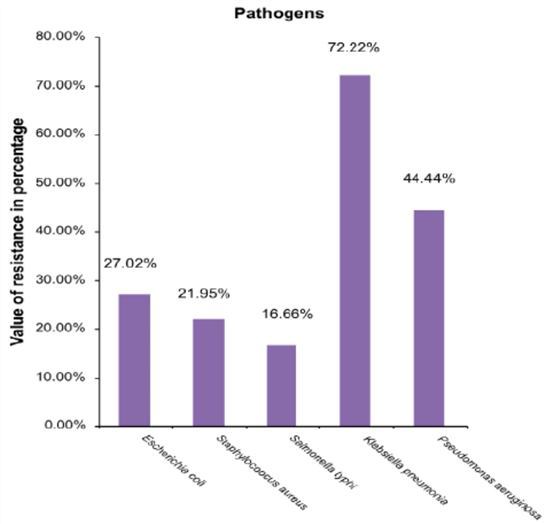
As the use of antibiotics in farming (which promotes growth and prevents infection in the animals) has contributed to the mutation of drug-resistant infections, one way to give yourself a better chance is to only consume meat that has been raised on organic farms.
There are other, more natural ways, that you can use to assist your immune system in the fight against these bacteria , and they include:
- Tea Tree Oil – which has a proven ability to fight off and kill staph bacteria. It’s used as a topical application, going directly onto infected skin.
- Apple Cider Vinegar and Baking Soda – the mix of these two ingredients can make a paste which works in a similar way to tea tree oil.
- Garlic – the complex make-up of garlic is great for boosting your immune system and fighting off infections.
- Coriander Oil – a study in 2011 by Portuguese scientists found that Coriander Oil is effective against 12 lethal bacteria.
- Pascalite – it is a type of bentonite clay found only in the mountains of Wyoming. When used topically, it’s known for its ability to draw infections from wounds in a matter of hours or days, bringing about total recovery.
- Turmeric – a healing product that has been used for centuries to fight off bacterial and viral infections. It has proven anti-inflammatory and antibacterial properties.
- Makuna Honey – when combined with Turmeric, it provides a powerful remedy to treat MRSA and other superbugs.
- Oil of Oregano – it has a proven ability to fight of bacteria and staph infections.
- Olive Leaf Extract – contains an active compound that provides immune system support at the same time as it fights antibiotic-resistant infections.
- Echinacea – this is mostly used today for fighting colds and flu, but was traditionally used to treat open wounds, diphtheria, cellulitis, blood poisoning, syphilitic lesions and other bacterial-related diseases. It contains the ability to destroy even the most virulent bacteria.
- Colloidal Silver – the germicidal and antibacterial properties of colloidal silver were discovered almost a century ago. Numerous clinical cases and anecdotal evidence provides us with the knowledge that colloidal silver can kill bacteria, fungal infections and viruses.
- Pau D’Arco – which is an herb native to South America whose active ingredient lapachol, has been found to relieve a wide range of infections include those initiated by bacteria, viruses and fungus.
So as you can see, although there are no known cures for these superbugs at this current time, there are things we can do to protect ourselves, and help us fight off these bacteria, with both traditional and herbal medication.
Watch the following video on Unstoppable Superbug – Closer Than We Think?
CHAPTER 3
EYE-OPENING ALTERNATIVE MEDICINE STATISTICS
NCCAM – the National Centre for Complementary and Alternative Medicine – is the federal government led agency that conducts scientific research for alternative medicine. On their website the following claims are made:

A lot of their research shows what and how complementary and alternative medicine is used. The diagrams below show the findings of this data (CAM = Complementary and Alternative Medicine ):
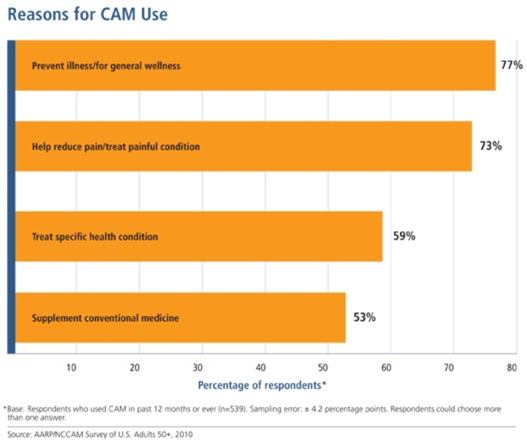





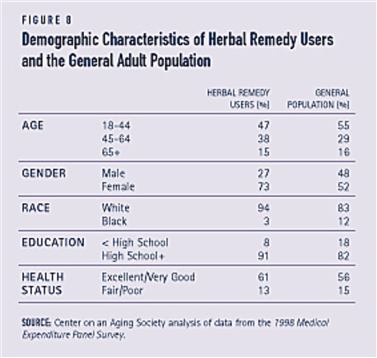
A study into ‘Public Perceptions of Herbal Medicines’ , which was run by Ipsos MORI on behalf of the Medicines and Healthcare products Regulatory Agency (MHRA) in 2008, conducted a research program.
The results of this were fascinating, and demonstrate just how we are becoming more content to use herbal therapies to avoid all of the side effects given by traditional medication. When asked about words associated with herbal medication, the most common were:
- Safe
- Natural
- Non-Addictive
- Pure.
Which demonstrates that generally people have a positive view of their usage and do not seem to pose any threats to users. Some of the quotes from the research groups, when asked what herbal medication was, were as follows:
“To me, it means something that’s been grown or produced without any chemicals in it.”
“And non-addictive. They’re supposed to be non-addictive.”
“A few years ago when I was breastfeeding I had to take mixed pollen for my hay fever, and I got the idea that the herbal medicines build up your resistance more, and maybe that’s why it takes longer to work.”
These broad statements demonstrate how little we actually know about herbal medication and the benefits we can receive from them. By not researching into the information available and trusting traditional medication solely, we are not giving our bodies the opportunity to discover what more natural remedies can do for us.
“The condition I have is a hormonal one and it affected my skin, and twice I’ve been treated with the NHS treatment, which is the strongest treatment in the world that you can take, and the side effects were horrific. It wasn’t worth it, and I still to this day feel physically ill because of what I took. I think it’s a really dangerous NHS drug and it’s been known to push people to commit suicide, and I thought I can’t, I’ll never, ever take that again, it’s too risky. And I went to the Chinese medicine and it’s worked for me and with no side effects. ”
“I was in China a few years ago and I watched a man, in fact I filmed him burn his own hands on a red hot chain and then he applied herbal cream to his hands. …And when he wiped his hands clean there were no marks on his skin. …I believe that there are a lot of medicines, herbal medicines that would work. But I think most of it is we don’t do it because we’re ignorant of it.”
As these two contrasting statements show, the biggest barrier people face when looking at herbal medication is information. We have doctors and pharmacists that are more than happy to discuss traditional medication, but it’s more difficult to obtain facts about how natural medications work – which is why this guide has been created.
The facts about herbal antibiotics
The antibiotics that your doctor prescribes are synthetic. One of the scary problems facing mainstream medicine is the increase in antibiotic-resistant bacteria. What is most concerning is that there are some bacteria that have developed a resistance to almost all antibiotics. Bacteria can genetically adjust for an antibiotic and transfer the resistance to other bacteria very rapidly.
So how are herbal antibiotics any better? It’s because herbal antibiotics are more complex.
Penicillin is one compound. But garlic, as an example, contains 33 sulfur compounds, 17 amino acids and more! So while it’s easier for bacteria to mutate and become resistant to a single compound, it’s much more difficult for them to mutate for a complex herbal antibiotic.
From this, it’s easy to see the benefits of herbal medication and why more people are turning to it on an annual basis. The NCCAM data below shows the age range of people using complementary and alternative medicine, and due to all the information shown so far, this is due to continue to grow dramatically.

Watch the following video on Complemetary and Alternative Medicine
CHAPTER 4
USAGE OF ANTIBIOTICS – ALL YOU NEED TO KNOW
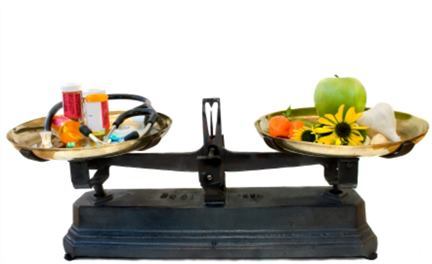
The choice to use herbal antibiotics is a very personal one. As demonstrated in the last chapter, having all of the information is pivotal to making the lifestyle change to using herbal medications – and this includes antibiotics. You have to be sure that they are right for you. Of course, in emergency situations such as acute illness or trauma, you cannot fault the work of traditional antibiotics. What herbal medication works better for is prevention , chronic disease and the after effects left behind by these antibiotics.
A study presented here shows that nearly one third of Americans use herbal remedies. Although there are things you will want to consider ensuring that they are the right fit for you and your health:
- Other medication that you are taking – you will need to consult with your doctor to check that they don’t interact badly.
- Side effects – although herbal medication has much less possibilities of side effects than conventional antibiotics, you still need to learn what the possibilities are in case they affect you.
- Regulation – herbal medication isn’t regulated in the way that conventional treatments are. There are a lot of resources and information available for you to make your own decisions, but there are a few groups that haven’t been properly tested on – women who are pregnant or breastfeeding, children or the elderly.
Infections can be described in two parts ‘heat ’ and ‘damp ’ . It suggests that antibiotics are brilliant for treating the ‘heat’ part of the infection – fever, sore throat, inflammation – whereas they often leave the ‘damp’ symptoms – phlegm, nausea, foggy-headedness – alone. This is why many herbalists will often recommend herbal treatments alongside the conventional medicine.
Antibiotics are primarily used for bacterial infections , such as:
- Conditions that are not especially serious but are unlikely to clear up without the use of antibiotics , such as moderately severe acne.
- Conditions that are not especially serious but could spread to other people if not promptly treated , such as the skin infection impetigo or the sexually transmitted infection Chlamydia.
- Conditions where evidence suggests that antibiotics could significantly speed up recovery , such as a kidney infection.
- Conditions that carry a risk of more serious complications , such as cellulitis or pneumonia.
The creation of antibiotics began in 1877, when Louis Pasteur discovered that the growth of disease-causing anthrax could be inhibited by saprophytic bacteria. Then, in 1928, the most important contribution to the world of antibiotics occurred when Alexander Flemming made the discovery that led to Penicillin. Since the 1970’s, most new antibiotics have been synthetic modifications of naturally occurring antibiotics.
The process of creating antibiotics is fermentation . If you’re interested in this process, the steps are listed below:
- Before fermentation can begin, the desired antibiotic-producing organism must be isolated and its numbers must be increased by many times. To do this, a starter culture from a sample of previously isolated, cold-stored organisms is created in the lab. In order to grow the initial culture, a sample of the organism is transferred to an agar-containing plate. The initial culture is then put into shake flasks along with food and other nutrients necessary for growth. This creates a suspension, which can be transferred to seed tanks for further growth.
- The seed tanks are steel tanks designed to provide an ideal environment for growing microorganisms. They are filled with the all the things the specific microorganism would need to survive and thrive, including warm water and carbohydrate foods like lactose or glucose sugars. Additionally, they contain other necessary carbon sources, such as acetic acid, alcohols, or hydrocarbons, and nitrogen sources like ammonia salts. Growth factors like vitamins, amino acids, and minor nutrients round out the composition of the seed tank contents. The seed tanks are equipped with mixers, which keep the growth medium moving, and a pump to deliver sterilized, filtered air. After about 24-28 hours, the material in the seed tanks is transferred to the primary fermentation tanks.
- The fermentation tank is essentially a larger version of the steel, seed tank, which is able to hold about 30,000 gallons. It is filled with the same growth media found in the seed tank and also provides an environment inductive to growth. Here the microorganisms are allowed to grow and multiply. During this process, they excrete large quantities of the desired antibiotic. The tanks are cooled to keep the temperature between 73-81° F (23-27.2 ° C). It is constantly agitated, and a continuous stream of sterilized air is pumped into it. For this reason, anti-foaming agents are periodically added. Since pH control is vital for optimal growth, acids or bases are added to the tank as necessary.
- After three to five days, the maximum amount of antibiotic will have been produced and the isolation process can begin. Depending on the specific antibiotic produced, the fermentation broth is processed by various purification methods. For example, for antibiotic compounds that are water soluble, an ion-exchange method may be used for purification. In this method, the compound is first separated from the waste organic materials in the broth and then sent through equipment, which separates the other water-soluble compounds from the desired one. To isolate an oil-soluble antibiotic such as penicillin, a solvent extraction method is used. In this method, the broth is treated with organic solvents such as butyl acetate or methyl isobutyl ketone, which can specifically dissolve the antibiotic. The dissolved antibiotic is then recovered using various organic chemical means. At the end of this step, the manufacturer is typically left with a purified powdered form of the antibiotic, which can be further refined into different product types.
- Antibiotic products can take on many different forms. They can be sold in solutions for intravenous bags or syringes, in pill or gel capsule form, or they may be sold as powders, which are incorporated into topical ointments. Depending on the final form of the antibiotic, various refining steps may be taken after the initial isolation. For intravenous bags, the crystalline antibiotic can be dissolved in a solution, put in the bag, which is then hermetically sealed. For gel capsules, the powdered antibiotic is physically filled into the bottom half of a capsule then the top half is mechanically put in place. When used in topical ointments, the antibiotic is mixed into the ointment.
- From this point, the antibiotic product is transported to the final packaging stations. Here, the products are stacked and put in boxes. They are loaded up on trucks and transported to various distributors, hospitals, and pharmacies. The entire process of fermentation, recovery, and processing can take anywhere from five to eight days.

These antibiotics work by taking advantage of the difference between the structure of the bacteria’s cell and the host’s cell . They either prevent the bacterial cells from multiplying, which leave their number the same allowing the body to fight them off with its natural defenses, or they kill the bacteria entirely.
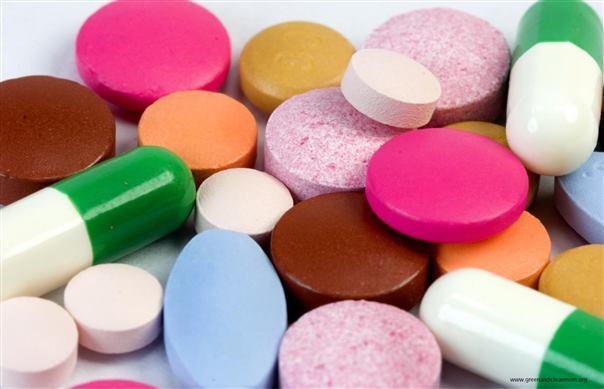
These antibiotics can be delivered in one of three ways:
- Orally – tablets, pills and capsules or a liquid that you drink which can be used to treat most types of mild to moderate infections in the body.
- Topically – creams, lotions, sprays or drops, which are often used to treat skin infections.
- Injections – these can be given as an injection or infusion through a drip directly into the blood or muscle, and are usually reserved for more serious infections.
Synthetic antibiotics can be divided into six different categories:
- Penicillins are widely used to treat a variety of infections, including skin infections, chest infections and urinary tract infections.
- Cephalosporins can be used to treat a wide range of infections but are also effective in treating more serious infections such assepticaemia and meningitis.
- Aminoglycosides tend to be used only to treat very serious illnesses such as septicaemia as they can cause serious side effects, including hearing loss and kidney damage. They break down quickly inside the digestive system so they have to be given by injection. They are also used as drops for some ear or eye infections.
- Tetracyclines can be used to treat a wide range of infections. They are commonly used to treat moderate to severe acne and a condition called rosacea, which causes flushing of the skin and spots.
- Macrolides can be particularly useful in treating lung and chest infections. They can also be a useful alternative for people with a penicillin allergy or to treat penicillin-resistant strains of bacteria.
- Fluoroquinolones are broad-spectrum antibiotics that can be used to treat a wide range of infections.
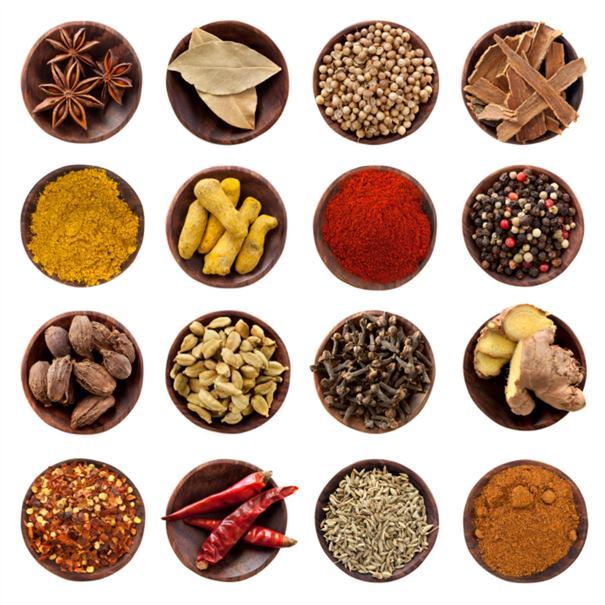
But what about the more natural, herbal antibiotics ? How do you decide which ones are right for you? Well, there are plenty of places you can get information from, and your doctor or pharmacist is one of these sources. Of course, they may try and encourage you to stick to traditional medication, but if you stick by your guns, they will be extremely useful in telling you what you can and can’t take due to your current medication list. Of course, to decide whether or not the herbal medication is for you – once you know that they are safe for you to take – the best thing you can do is try them. Once you’ve tried the recommended dosage, you’ll know how effective they are for your body.
In many cases, scientists aren’t sure what specific ingredient in a particular herb works to treat a condition or illness. Whole herbs contain many ingredients, and they may work together to produce a beneficial effect. Many factors determine how effective an herb will be. For example, the type of environment (climate, bugs, soil quality) in which a plant grew will affect it, as will how and when it was harvested and processed.
Natural antibiotics work in two ways ; they eliminate dangerous germs and they boost the body’s natural defenses . There are many foods, herbs and spices that have the natural antibiotic qualities needed.
Some examples with information on how they work – are listed below:
Oregano Oil
There are many ingredients and foods that naturally have antibiotic activity. For example oregano oil contains a high concentration of thymol and carvacrol, two potent antibacterial, antifungal compounds. These may help to prevent secondary bacterial infections. Oregano essential oil is very potent against a variety of microorganisms when tested against other antimicrobial oils. Studies show it’s an effective antibiotic against Staphylococcus aureus (staph infections) . Oregano oil may be useful in treating respiratory tract disorders, gastrointestinal disorders, menstrual cramps and urinary tract infections. It can also be used topically for skin conditions to control acne or dandruff.
Honey
Honey as a food has natural anti-inflammatory activity, but not all honeys are created equal. Manuka honey from New Zealand contains other actives like methylglyoxal (MG). MG is thought to give Manuka honey its antibacterial properties. Manuka is best for treating wounds, however this is medical-grade honey, which is sterilized and packaged as a wound dressing.
Garlic
Garlic has a long history of use as an antibacterial agent. Facing shortages of penicillin in World War II, Russian medics turned to garlic. “Today, with the rise of antibiotic resistant bacteria, there is renewed interest in studying allicin, the active component in garlic. Allicin breaks down in heat so it must be ingested raw. Raw garlic oil may also be effective as a topical antimicrobial,” says McCrae. Common uses include treating colds and flu, skin fungal infections and warts, high blood pressure and garlic may have potential in serious disorders such as diabetes, heart disease and some cancers.
Tea Tree Oil
Tea tree oil is an antiseptic and effective against certain strains of bacteria. Oil from the alternifolia species of the Melaleuca Tree have been shown to be most effective and less irritating to the skin. Tea tree oil is used in skin conditions like acne, fungal infections, and athlete’s foot as well as vaginal infections, herpes and infections of the mouth or ear.
Elderberry juice
A number of recent studies emphasize the immune bolstering effect of elderberry water-based extracts and juice as having free-radical scavenging activity, able to protect cells from the damage of infections and disease. The blue or black berries have been used in fighting flu, coughs, colds and tonsillitis. Their antioxidant benefits may also play a role in lowering bad cholesterol and some cancers.
Berberine
Berberine, which naturally occurs in several herbs like barberry (Berbers vulgaris ), has broad-spectrum antibiotic-like activity and a long history of medicinal use in Chinese and Ayurvedic medicine. Berberine has shown antimicrobial activity against bacteria, viruses, fungi, protozoans and worms. It is widely used for preventing many kinds of infections especially eye infections and bacterial diarrhea. In one recent study, berberine and goldenseal extract both are strongly inhibited influenza.
Andrographis
Andrographis is one of the most credible immune bolstering herbs based on several human clinical trials against upper respiratory tract infections, for reducing the severity of symptoms (especially sore throat), as well as expectoration, nasal discharge, headache, fever, earache, malaise/fatigue and sleep disturbances.
A multi-centre study, including John’s Hopkins , found “herbal therapies are at least as effective as Rifaximin” with “similar response rates and safety profiles”. A previous study, by Dr Logan, used enteric coated peppermint oil (ECPO), in a single patient with moderate results. This is just one of the many studies that demonstrate how effective herbal medication is.
Watch the following video on Antibiotics vs. Botanic Therapeutics and Supplements
Herbal remedies are also brilliant for dealing with the side effects left behind by antibiotics.
- These can include the following list:
- Chronic sinus congestion
- Fatigue, heaviness or fogginess
- Recurrent sinus or bladder infection
- Urinary urgency or pressure
- Chronic yeast infection
- Loose stools, bloating or loss of appetite
- Nausea or sickness
- Abdominal pain or diarrhea
Here are some complementary treatments to look after your body whilst you’re using antibiotics:
- Probiotics – rebuild the body’s good bacteria.
- Herbal Tea – to help combat nausea.
- Milk Thistle – for the antioxidant effects on your liver.
You should also be:
- Eating onion and garlic to support your liver and to keep your yeast in check.
- Taking Omega 3, Vitamin C and E and Oregon Grape Root.
- Ensuring that you consume a well-balanced diet.
Of course, there are pros and cons of both antibiotics and more natural remedies. These need to be considered when making your decision on what to take.
Pros of Antibiotics
These are several of the most prominent advantages of taking antibiotics:
- They can treat many infections : antibiotics can treat a wide variety of infections such as strep throat, tonsillitis, and sinusitis.
- They are easy to administer : most antibiotics are easy to administer since you can take them orally or via injection.
- There are few side effects : many antibiotics have few side effects, which makes them the perfect option when you feel extremely sick.
- Cost-effective : most types of older antibiotics – especially those with generic alternatives – are often very affordable on any budget, even if you lack health insurance.
Cons of Antibiotics
While there are many benefits of antibiotics, there are also several disadvantages, such as:
- Allergic reactions : depending on your drug allergies, you may be extremely allergic to some types of antibiotics, such as those containing sulfa. Unfortunately, sulfa is present in many common antibiotics, so it may be more difficult to find a suitable medication for your illness.
- Drug-resistant bacteria : if you do not take the full dose of an antibiotic, it only kills some of the bacteria in your system and can make the rest antibiotic-resistant, which means antibiotics may not work as well for you in the future.
- Potential side effects : while many antibiotics have few side effects, some can trigger nasty problems such as digestion issues, discomfort, nausea, diarrhea, and sensitivity to light.
On top of this, a Finnish study demonstrates that the effects of antibiotics on intestinal bacteria were still visible after a year. This means that the after effects of antibiotic use are damaging for a long time. The continual overuse of antibiotics will lead to more strains of drug-resistant bacteria developing and more unnecessary deaths will occur, which is why we should use herbal antibiotic treatments wherever possible.
Pros of Natural Remedies
There are a number of advantages associated with using herbal medicines as opposed to pharmaceutical products:
- Reduced risk of side effects : Most herbal medicines are well tolerated by the patient, with fewer unintended consequences than pharmaceutical drugs. Herbs typically have fewer side effects than traditional medicine, and may be safer to use over time.
- Effectives with chronic conditions : Herbal medicines tend to be more effective for long-standing health complaints that don’t respond well to traditional medicine. One example is the herbs and alternative remedies used to treat arthritis. Vioxx, a well-known prescription drug used to treat arthritis, was recalled due to increased risk of cardiovascular complications. Alternative treatments for arthritis, on the other hand, have few side effects. Such treatments include dietary changes like adding simple herbs, eliminating vegetables from the nightshade family and reducing white sugar consumption.
- Lower cost : Another advantage to herbal medicine is cost. Herbs cost much less than prescription medications. Research, testing, and marketing add considerably to the cost of prescription medicines. Herbs tend to be inexpensive compared to drugs.
- Widespread availability : Yet another advantage of herbal medicines is their availability. Herbs are available without a prescription. You can grow some simple herbs, such as peppermint and chamomile, at home. In some remote parts of the world, herbs may be the only treatment available to the majority of people.
Cons of Natural Remedies
Herbs are not without disadvantages, and herbal medicine is not appropriate in all situations. These are a few of the disadvantages to consider:
- Inappropriate for many conditions : Modern medicine treats sudden and serious illnesses and accidents much more effectively than herbal or alternative treatments. An herbalist would not be able to treat serious trauma, such as a broken leg, nor would he be able to heal appendicitis or heart attack as effectively as a conventional doctor using modern diagnostic tests, surgery, and drugs.
- Lack of dosage instructions : Another disadvantage of herbal medicine is the very real risks of doing yourself harm through self-dosing with herbs. While you can argue that the same thing can happen with medications, such as accidentally overdosing on cold remedies, many herbs do not come with instructions or package inserts. There’s a very real risk of overdose.
- Poison risk associated with wild herbs : Harvesting herbs in the wild is risky, if not foolhardy, yet some people try to identify and pick wild herbs. They run a very real risk of poisoning themselves if they don’t correctly identify the herb, or if they use the wrong part of the plant.
- Medication interactions : Herbal treatments can interact with medications. Nearly all herbs come with some warning, and many, like the herbs used for anxiety such as Valerian and St. John’s Wort, can interact with prescription medication like antidepressants. It’s important to discuss your medications and herbal supplements with your doctor to avoid dangerous interactions.
- Lack of regulation : Because herbal products are not tightly regulated, consumers also run the risk of buying inferior quality herbs. The quality of herbal products may vary among batches, brands or manufacturers. This can make it much more difficult to prescribe the proper dose of an herb.
From these lists it’s clear to see why herbal antibiotics have been used for centuries – for a long time before synthetic antibiotics were created. They work alongside our bodies to fight of bacteria and infection which is why we are left with far fewer side effects. Even if you need to take prescription antibiotics, herbal remedies are great for keeping your body healthy and combating any side effects that may occur.
CHAPTER 5
HOW TO FIGHT INFECTIONS NATURALLY
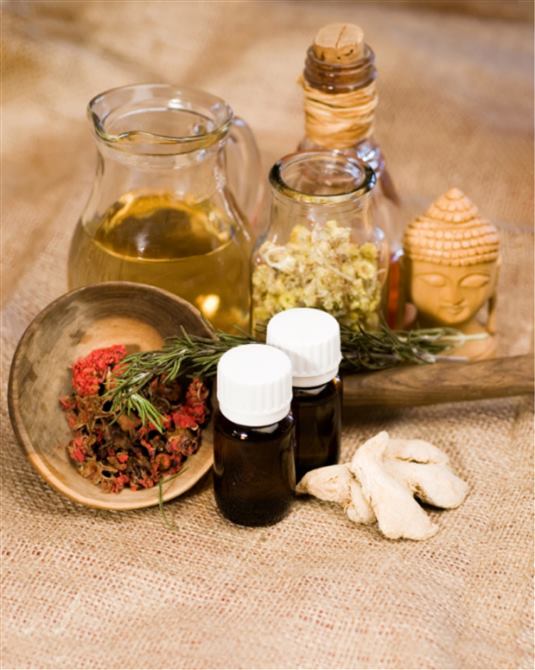
There are many ways that your body can fight infections and strengthen your immune system naturally – it is designed to do so. Sometimes it just needs a little help when bacteria has mutated. Aside from herbal medication, there are factors that you can include in your everyday lifestyle as preventative methods:
- Don’t smoke.
- Eat a healthy diet – fruits, vegetables, whole grains and low saturated fats.
- Exercise regularly.
- Maintain a healthy weight.
- Control your blood pressure.
- If you drink alcohol, do so in moderation.
- Get adequate sleep.
- Take steps to avoid infection – wash your hands frequently, cook meats thoroughly, etc.
- Get regular medical screening tests suitable for your age range and risk group.
There are many different herbs that contain antibiotic qualities – many of which are discussed in detail in the next chapter – there are some key essential oils that you should be aware of.
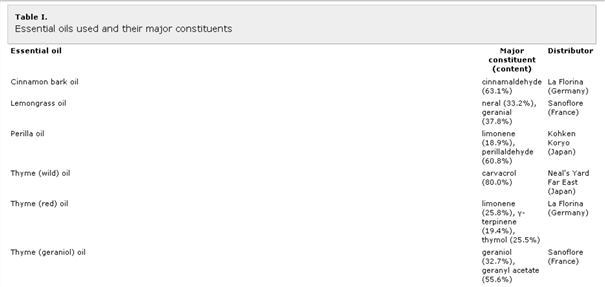

Another study lists the most essential oils as Thyme, Tea Tree, Lavender, Oregano, Geranium and Lemon. This second study looks further into what is popular, rather than scientific fact, but both are equally relevant.
Many antibiotics can be found in food, herbs and spices . The following is the list of most useful:
Food:
- Honey
- Cabbage
- Fermented Foods
- Horseradish
- Lemon
- Pineapple
- Curd
- Turmeric
- Ginger
- Carrot
- Onions and Garlic
Herbs and Spices:
- Thyme
- Mints
- Basil
- Cinnamon sage
- Chervil
- Rosemary
- Lemon balm
- Oregano
- Cumin tarragon
- Cloves
- Bay leaf
- Chili peppers
- Marjoram
- Caraway seed
- Coriander
- Dill
- Nutmeg
- Cardamom
- Pepper
Watch the following video on Natural Antibiotics in Food
CHAPTER 6
TOP 45 WONDROUS HERBS
1. Onions and Garlic

In a study, garlic was tested on mice against an antibiotic-resistant strain of Staphylococci. The results showed the garlic had protected the mice against the pathogen and significantly reduced any inflammation. Both garlic and onion have been used to help fight off the residual effects of colds and flu, while garlic’s antifungal properties help prevent yeast infections and combat viral conditions, onion’s high phytonutrient content are known to “mop up” free radicals that can lead to cancer in the body.
TIP: Did you know about onion’s magnetic power? It attracts all germs and bacteria. If a person falls ill, keep an onion bulb under his feet. You can also place some onion pieces near that person. They will draw all the toxins from the body.
Availability : Can be purchased from most food-based shops. (e.g. iHerb , Amazon , Natures Best )
Antibiotic Properties : The sulphur compounds in onions and garlic is a key ingredient in antibiotics. They destroy bad bacteria and kill off infections. Primarily used for lowering blood pressure also for diabetes .
Collection & Preparation : Available as powder, tablets, capsules or can be consumed in food (preferably raw).
Dosage : 2-5g or powder per day or take it raw.
Possible Side Effects : The smell can often lead to bad breath, heart burn and upset stomach.
Contraindications : Do not take if allergic to garlic or if pregnant or breastfeeding.
Alternatives : All close relatives of onions and garlic including shallots, leeks, chive and rakkyo.
Other Uses : Blood pressure, digestion, stomach ulcers, cancer, blood clotting, impotence, antiseptic, hair loss, etc.

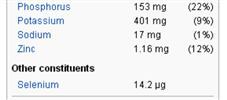
Watch the following video on The Health Benefits of Garlic
2. Honey
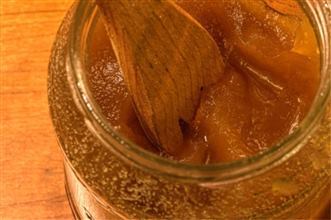
Honey has been used as an antibacterial treatment, long before antibiotics were invented in cultures all over the world. Honey contains an enzyme, antimicrobial in nature, which releases hydrogen peroxide and prohibits the growth of certain bacteria. In Chinese medicine honey is thought to harmonize the liver, neutralize toxins, and relieve pain; and its antibacterial properties are effective in the treatment of the bacterium Heliobacter pylori or stomach ulcers. Did you know that honey never goes bad? It may be kept without preservatives for years.
TIP : Honey is very effective to treat Cough, Cold, Phlegm and Asthma. It is especially very effective when you take it a teaspoon with half a teaspoon of Black Pepper first thing in the morning. Take only for three days at a time.
Availability: In most food-based shops. (e.g. iHerb , Amazon , Herbal Remedies )
Antibiotic Properties: A high viscosity and enzymatic production of hydrogen peroxide. Primarily used for treating wounds and burns . Remember, the darker the honey, the higher the antibiotic quality.
Collection & Preparation: Honey can be consumed in food or used topically on skin. Best used as antiseptic (locally).
Dosage: 15-30ml per day. Avoid excessive usage.
Possible Side Effects: Could react badly if allergic to pollen.
Contraindications: Infants can contract botulism – a paralytic illness produced by bacteria – from honey.
Alternatives: N/A.
Other Uses: Gastric disturbances, ulcers, wounds, burns, diabetes, allergies, coughs, cancer, etc.


Watch the following video on Top 10 Benefits of Honey
3. Cabbage
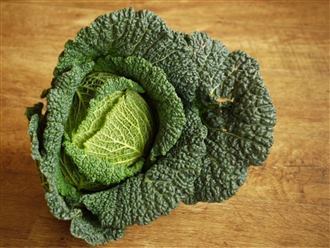
A member of the cruciferous vegetable family, along with broccoli, kale, cauliflower and Brussels sprouts, cabbage has long been recognized for its healing powers. One reason is the cancer fighting sulphur compounds. Another is that fruits and vegetables high in vitamin C are considered a natural antibiotic and a one-cup serving of cabbage provides about 75 percent of your daily adult allowance.
TIP : Did you know that Cabbage juice is highly recommended in the treatment of stomach ulcers. Drink half a cup of fresh cabbage juice 2–3 times a day, between meals for two weeks. Add half a teaspoon of raw, unfiltered honey and sip slowly, even chewing a bit to get the enzymes going. Topically, raw cabbage leaves applied to tender breasts can relieve inflammation from mastitis, fibro cysts and menstrual breast tenderness.
Availability: In most food-based shops. (e.g. Asda )
Antibiotic Properties: High in glutamine and vitamin K. Primarily used for asthma, cancer and morning sickness .
Collection & Preparation: Eaten raw or in a juice form is most effective.
Dosage: Include raw cabbage in regular diet every day.
Possible Side Effects: Risen sugar and glucose levels, check with a doctor if you’re using any medication. It may also cause blisters. Excessive use may cause Constipation.
Contraindications: Diabetics may have their blood sugar affected; people who suffer with an underactive thyroid may have their condition worsened. Avoid during pregnancy or breast feeding.
Alternatives: Closely related cole crops such as broccoli and cauliflower.
Other Uses: Breast calming, weight loss, acid reflux, candidiasis, cancer, headaches, etc.
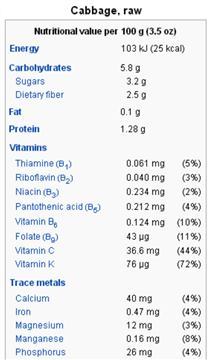

Watch the following video on Reducing Swelling with Cabbage Leaves
4. Calendula (Marigold)
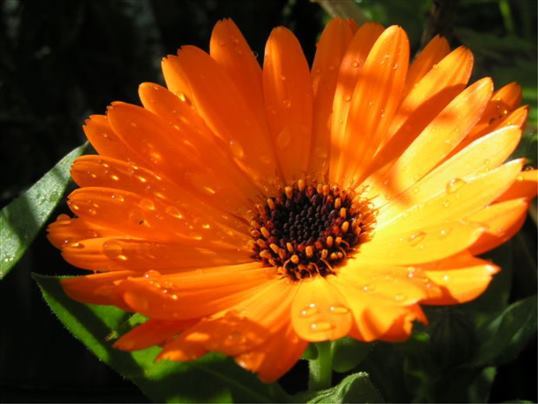
These Calendula Officinalis flower petal have been since at least the 12th century as medicine in Ancient Greece, Rome and Indian cultures. Many plant pharmacological studies have suggested that Calendula extracts may have antiviral, anti-genotoxic, and anti-inflammatory properties in vitro. In a study, the methanol extract of Calendula Officinalis exhibited antibacterial activity and both the methanol and the ethanol extracts showed antifungal activities. Along with horsetails (Equisetum arvense ), pot marigold is one of the few plants which is considered astringent despite not being high in tannins.
TIP: Calendula is available in the form of a tincture at Homeopathic pharmacies and it’s called Marigold Tincture. Always keep a bottle at home as it’s excellent for bleeding cuts. Dress wound with the tincture diluted with water (half and half) and bandage.
Availability: In most good herbal remedy stores. (e.g. Amazon , iHerb , Mountain Rose Herbs )
Antibiotic Properties: Faradiol-3-O-palmitate, faradiol-3-O-myristate, faradiol-3-O-laurate, arnidiol-3-O-palmitate, arnidiol-3-O-myristate, arnidiol-3-O-laurate, calenduladiol-3-O-palmitate, and calenduladiol-3-O-myristate. Primarily used for menstrual pain, aphthous ulcers and the cream focuses on skin issues.
Collection & Preparation: Petals must be dried out over 4–6 weeks. Can be bought as a tonic, a cream or prepared in food.
Dosage: Infusion: 1 tsp (5 - 10 g) dried florets in 8 oz (250 ml) water; steep 10 - 15 minutes; drink 2 - 3 cups per day.
Possible Side Effects: Do not use if allergic to ragweed, drowsiness can be caused.
Contraindications: Can affect conception. Also do not use when on sedatives, blood pressure medication or diabetes medication. Taking Calendula internally during pregnancy or nursing may cause miscarriage.
Alternatives: N/A.
Other Uses: Burns, wounds, blepharitis, dermatitis, ear infections, bruises, acne, etc.
Watch the following video on Calendula Offiicinalis
5. Cinnamon
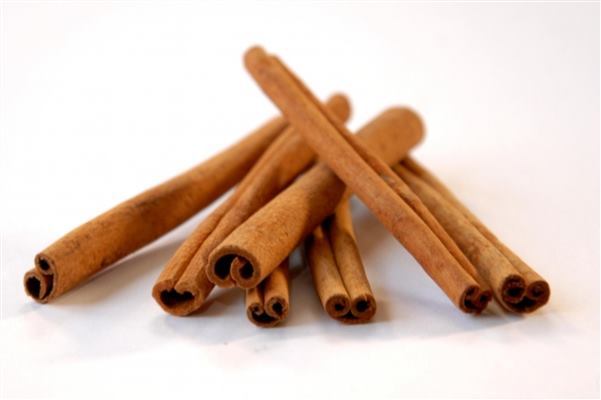
Honey and cinnamon are combined often to fight various infections. Daily use of these two products can prevent bacterial and viral infections and they help strengthen white blood cells. They can be drunk with water to heal colds and coughs and heal bladder infections. Honey and cinnamon paste can ease an aching tooth, cure acne, eczema, insect bites, ringworm and other skin infections.
A study conducted by a group of surgeons found that a cinnamon oil solution was able to kill common infections – many of them found in hospitals. Some of these hospital-acquire infections are MRSA and streptococcus. Cinnamon oil was found to be as effective as antiseptics used to combat infections caused by these bacteria and could be used in hospitals. A similar study by French scientists found that cinnamon oil of 10% or less strength was able to fight various strains of bacteria, like E.coli and staphylococcus, resistant to conventional antibiotics.
TIP: Did you know that chewing cinnamon sticks daily is very effective way to treat Gout?
Availability: In most good health food and herbal remedy stores. (e.g. iHerb , Amazon , Healthspan )
Antibiotic Properties: Cinnamaldehyde, cinnamyl acetate, and cinnamyl alcohol. Cinnamon strengthens white blood cells and helps the body to fight off infections. Primarily used for diabetes symptoms and indigestion .
Collection & Preparation: Can be taken as juice, powder or prepared with food. Also can be bought as tablets and capsules.
Dosage: 1–6g per day for no longer than 6 weeks.
Possible Side Effects: Increased heart rate and palpitations.
Contraindications: Do not take if using blood-thinners such as Warfarin. Also avoid it if you experience prostate problems.
Alternatives: N/A.
Other Uses: Improving glucose and lipid levels, gout, high blood pressure, HIV, multiple sclerosis, etc.
Watch the following video on The Amazing Health Benefits of Cinnamon
6. Clove
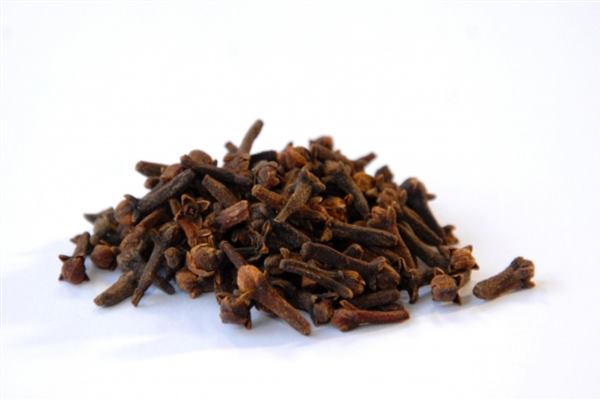
Cloves are one of the highly prized spices, widely recognized all over the world for their medicinal and culinary qualities. They are the “flower buds” from evergreen rain-forest tree native to Indonesia.
Botanically, the spice belongs to the family of Myrtaceae of the genus; Sygyzium, and scientifically named as Sygizium aromaticum . The flower buds are initially pale in colour, gradually turn to green, and, finally develop into bright-red clove buds by the time of harvesting. Buds are generally picked up when they reach 1.5-2 cm in length.
TIP: Clove is very effective in helping you to avoid premature ejaculation. Simply add a few drops of clove oil to a carrier oil like sesame oil and massage the penis with it for a few days for around 15 minutes per day.
Availability: In most good health food and herbal remedy stores. (e.g. New Way Herbs , iHerb )
Antibiotic Properties: Eugenol. Brilliant for digestive and respiratory support, boosting your immune system and eliminating the bad breath or aphthous ulcers. Clove oil is primarily used to numb and relieve pain . It’s very effective to relieve toothache.
Collection & Preparation: Buy whole cloves rather than powder, store them in a cool, dark place and cook them within your food. Also available as an oil or essential oil.
Dosage: For toothache put 2-3 drops of Clove oil in a cup of warm water. Gargle 3-4 times a day. For bloating – take 4-5 drops of Clove oil in glass of water and drink it twice a day.
Possible Side Effects: Dermatitis, vomiting, dizziness, diarrhea and bloating.
Contraindications: Do not use if allergic to eugenol, suffer from Crohn’s disease or have liver problems. Avoid use of cloves and clove oil during pregnancy. Can also cause irritation if used in its pure form.
Alternatives: Basil, marjoram, cinnamon.
Other Uses: Digestion issues, lack of appetite, travel sickness, respiration diseases, acid reflux, Candidiasis etc.
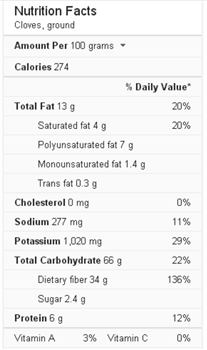
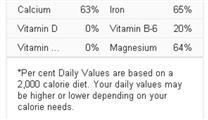
Watch the following video on Clove – Herbal Medicinal Properties
7. Echinacea

Echinacea is one of the top-selling herbal remedies throughout the world. It is also one of the oldest. Not only has this healing herb enjoyed long popularity, it also has been the subject of much scientific research. Echinacea is a native American plant that was recognized over a century ago as a natural infection fighter. It is an immune-stimulant, a substance that boosts the body’s immune system. Unlike traditional antibiotics that kill bacteria directly, Echinacea works indirectly, killing the germ by strengthening your immune system. While the entire Echinacea story is still being researched, there is some evidence that it stimulates the body to produce more infection-fighting white blood cells, such as T-lymphocytes and killer white blood cells. It may also stimulate the release of interferon, one of the body’s most potent infection-fighting weapons. Interferon kills germs and also infiltrates their genetic control center, preventing them from reproducing. Besides helping the body produce more infection- fighting cells, Echinacea helps these cells to produce more germ-eating cells, called macrophages, and it helps these cells eat the germs more voraciously, a process called phagocytises. Echinacea also prevents bacteria from secreting an enzyme called hyaluronidase, which enables them to break through protective membranes, such as the lining of the intestines and respiratory tract, and invade tissues. Echinacea also seems to search out and destroy some viruses, such as the common cold and flu viruses.
TIP : Echinacea helps the body to create the powerful immune cells which fight with bacterial infections. For internal use, grind the dried Echninacea, add 2-3 teaspoons of powder in a cup of water. Boil and strain it, and have this tea twice a day. For external use, soak a cotton ball in the infusion of Echinacea and tap onto the infected skin area.
Availability: From most good herbal remedy shops. (e.g. A. Vogel , iHerb , Amazon )
Antibiotic Properties: Polysaccharides, glycoproteins, alkamides, volatile oils and flavonoids. An immunostimulant which helps the body boost its immune system. Primarily used for upper respiratory tract infections – such as a cold or bacterial infections.
Collection & Preparation: Can be taken as a herb juice, tincture, a freeze-dried capsule or a tablet. You can also make a tea by drying the roots out for two weeks and brew it with 8 ounces of water.
Dosage: Juice 6-9ml for 3 weeks, capsule 100mg three times a day, tablet 6.78mg three times a day. The most recommended method of consuming it is to Tincture it. Avoid using for longer than 3 weeks.
Possible Side Effects: Itchiness or a rash. High doses of Echinacea may cause nausea, dizziness, insomnia or headaches.
Contraindications: Do not take if suffering with auto-immune disorders such as MS. Avoid use during pregnancy or if allergic to Ragwood. Also check with doctor for possible interaction with other medicine, e.g. heart medication, antifungal or anti-anxiety drugs.
Alternatives: N/A.
Other Uses: Influenza, urinal tract infections, vaginal yeast infections, genital herpes, gum disease, acne, psoriasis, sinus infections, candidiasis, asthma etc.
Watch the following video on Echinacea – Natural Antibiotic
8. Oregon Grape Root
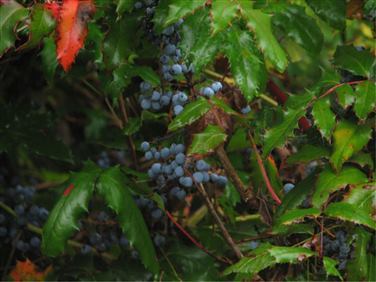
Oregon grape is not botanically related to the endangered goldenseal, but for many uses Oregon grape serves as an excellent alternative; they both contain the immune-stimulating, infection-fighting, antiseptic constituent berberine. Herbs that contain berberine are scientifically proven to protect against bacteria, viruses, and fungi.
Herbalists use Oregon grape root in the treatment of bacterial diarrhea, intestinal parasites, and eye infections. It has a sedative effect on the smooth muscles lining the digestive tract and can relieve stomach cramps and abdominal pain. Oregon grape can be used in skin washes to deter the over production of skin cells that occurs in plaque psoriasis. One of the advantages to using preparations of the whole herb, as opposed to using products that only contain berberine extracts is that Oregon grape root contains tannins that ease inflammation, irritation, and itching of the skin.
Availability: Available in most good herbal remedy shops (e.g. iHerb )
Antibiotic Properties: Berberine. Oregon Grape Root works well alongside conventional medicine as it is thought to give antibiotics ‘in’ to the right cells. Primarily used for liver and eye problems .
Collection & Preparation: Available as a cream or capsules. Can also be made into a tea by simmering 1–2 teaspoons of coarsely cut root for 10–15 minutes.
Dosage: Take for no longer than a week, leaving at least a 7 day break.
Possible Side Effects: Can cause jaundice and kernicterus in children.
Contraindications: Do not take while pregnant or suffering from diarrhea.
Alternatives: Berberry, coptis, goldenseal.
Other Uses: Stomach ulcers, psoriasis, acid reflux, dysentery, syphilis etc.
Watch the following video on Oregon Grape – Where to Find it, How to Use it
9. Marshmallow Root
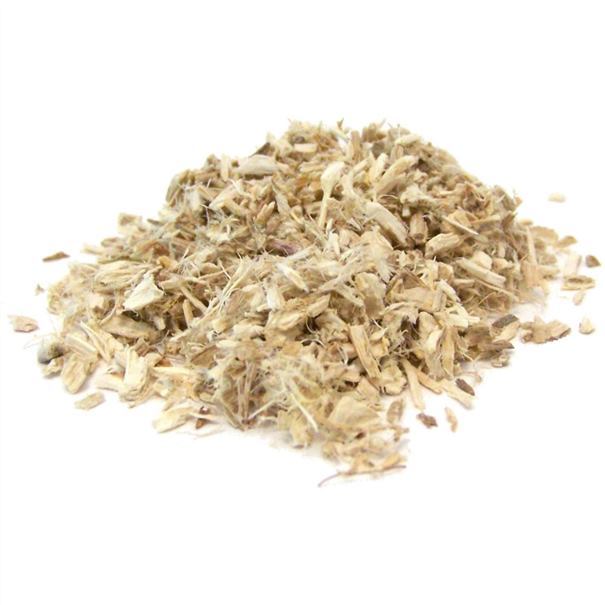
Marshmallow Root is a demulcent herb, meaning that it is cooling, soothing and slippery. It is often used to sooth digestion, skin or hair. It is unique in that when making a tea with Marshmallow Root, you will want to brew it with cold water to preserve the mucilaginous properties.
Marshmallow works as mucilage, producing a thick sticky substance that coats membranes. Marshmallow extract contains flavonoids, which contain anti-inflammatory properties. The flavonoids are able to reduce inflammation while the mucilage holds them in place and prevents further damage. The extracts also induce phagocytosis, which is the process in which certain cells engulf bacteria, dead cell tissues or other solid particles. This helps speed up the healing process. The mucilage remains unaltered until it reaches the colon, which is why marshmallow works well on most inflammatory digestive disorders.
TIP : Did you know that Marshmallow can help you with smoking addiction? Simply prepare a leaf tea of Common Marshmallow and take it two times a day. Alternatively, you can purchase capsules of Common Marshmallow from the market and take two capsules two times a day.
Availability : From most good herbal remedy stores. (e.g. iHerb , Amazon , Natures Remedy )
Antibiotic Properties : Phagocytosis and flavonoids. Marshmallow root forms a protective layer over the skin or digestive system to help them heal. Primarily used for inflammation calming in mucous membranes .
Collection & Preparation : Can be made into a tea, applied topically or taken as a tablet.
Dosage : 1–2 teaspoons in boiling water, taken 2–3 times a day. Tablets taken 2–3 times daily.
Possible Side Effects : Low blood sugar levels. May cause itching, skin rashes, breathing problems.
Contraindications : Don’t use if you suffer from diabetes. Avoid during pregnancy.
Alternatives : N/A.
Other Uses : Dry coughs, ulcers, gangrene, upset stomach lining, constipation, pain and swelling, etc.
Watch the following video on Marshmallow
10. Usnea
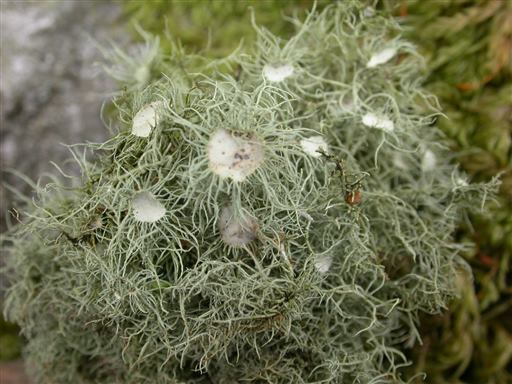
Usnea is an anti-microbial herb, meaning that it affects a wide range of pathogens. It, however, is not an antibiotic herb that kills all types of bacteria. This is actually a positive trait for humans. Usnea is highly effective against many types of gram positive bacteria. Common examples include Staph ( Staphylococcus simulans and S. aureus ) and Strep ( Streptococcus ).
Because it affects mainly gram positive bacteria, it can effectively kill unwanted pathogens without majorly disrupting healthy gut flora. Usnea is also used for strep throat, tuberculosis, pneumonia, upper respiratory tract infections, urinary tract infections, and diarrhea.
Availability: From most good herbal remedy stores. (e.g. iHerb , Amazon )
Antibiotic Properties: Usnic acid. Primarily used to decrease inflammation and is great for fever control and pain relief .
Collection & Preparation: Use a tincture ratio of 1:5. The liquid should be composed of half water and half pure grain alcohol.
Dosage: Use 2 teaspoons of tincture in warm water 30 minutes before mealtime thrice a day. Do not use for more than 2 weeks.
Possible Side Effects: May cause gastrointestinal disorders or dermatitis if used topically.
Contraindications: Avoid using during pregnancy and breast feeding.
Alternatives: N/A.
Other Uses: Pneumonia, vaginal infections, sinus infections, mastitis, candidiasis, influenza. It can also be used in mouthwashes, gargles and lozenges.
Watch the following video on Usnea Australis
11. Uva Ursi
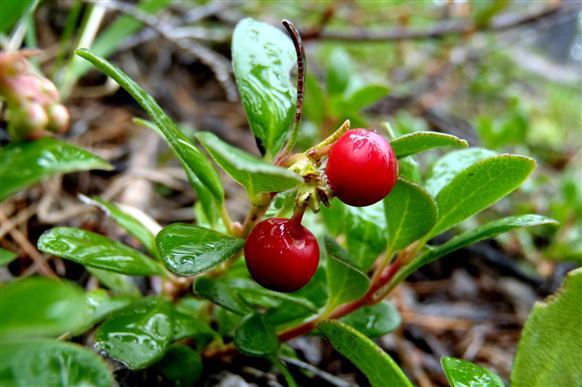
“Uva ursi ” means “bear’s grape” in Latin, probably because bears are fond of the fruit. Uva ursi was first documented in a 13th century Welsh herbal. Teas and extracts of the leaves have been used as urinary tract antiseptics and diuretics for centuries. The plant has been used as a laxative and the leaves have been smoked. Bearberry teas and extracts have been used as vehicles for pharmaceutical preparations. In homeopathy, a tincture of the leaves is believed to be effective in the treatment of cystitis, urethritis, and urinary tract inflammations. The berries are not used medicinally. They are juicy but have an insipid flavor that improves upon cooking.
TIP : Uva Ursi promotes the functioning of functioning of healthy kidney, but aggravates an existing kidney disease. Therefore do not take Uva Ursi if you suffer from any kidney problem.
Availability: In most good health food and herbal remedy stores. (e.g. iHerb , Puritan )
Antibiotic Properties: Hydrolysable, ellagic and gallic acid tannins. There is a sugary molecule in Urva Ursi that transforms into a natural antibiotic when it gets into your urinary tract. Primarily used for urinary tract infections .
Collection & Preparation: Available as tablets, capsules, in crushed leaf or powder forms. Also can be made into a tea by soaking 3g of dried leaves in 4oz of water for 12 hours.
Dosage: 400–840mg daily. Tea can be drunk 3–4 times a day.
Possible Side Effects: Nausea, vomit, stomach upset, ringing in your ears.
Contraindications: Do not use if you suffer with retina thinning. Avoid during pregnancy or breast feeding. Not recommended for children under 12. Avoid if kidney disease exists.
Alternatives: N/A.
Other Uses: Kidney and bladder infections, urinal tract infections, bronchitis, bloating etc.
Watch the following video on How to Use Uva Ursi
12. Yarrow
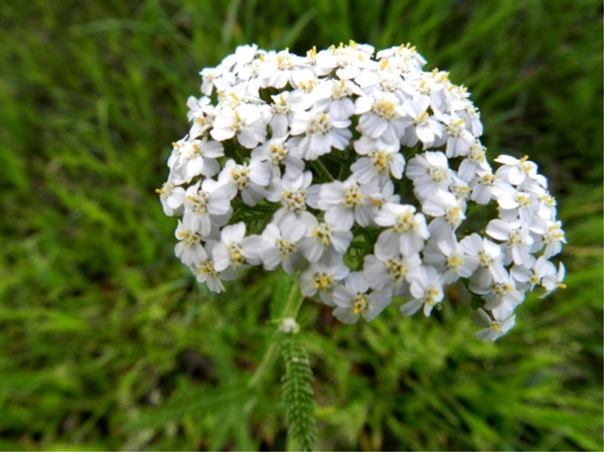
Achillea millefolium , known commonly as yarrow or common yarrow, is a flowering plant in the family Asteraceae. It is native to temperate regions of the Northern Hemisphere in Asia, Europe, and North America. In New Mexico and southern Colorado, it is called plumajillo (Spanish for ‘little feather’) from its leaf shape and texture. In antiquity, yarrow was known as herbal militaris , for its use in staunching the flow of blood from wounds. Other common names for this species include gordaldo, nosebleed plant, old man’s pepper, devil’s nettle, sanguinary, milfoil, soldier’s woundwort, thousand-leaf, and thousand-seal.
TIP : Yarrow is one of the best herbal remedy to stop bleeding. The dried and powdered leaves of Yarrow stop nosebleed within seconds. Surprisingly, Yarrow can also cause nosebleed. The fresh Yarrow inserted into the nostril can initiate nosebleed.
Availability: In most good herbal remedy stores. (e.g. iHerb , Discount Supplements )
Antibiotic Properties: Achillea millefolium. Yarrow increases saliva and stomach acid so is primarily used to aid digestion . It is also super effective for bleeding (internal and external).
Collection & Preparation: It’s available as a dried or fresh herb (which can be used in food), a capsule or tablet and liquid extracts or essential oils.
Dosage: No more than 4.5g per day
Possible Side Effects: Drowsiness, dermatitis. Use for long time may cause headache and photo sensitivity to light.
Contraindications: Do not use if you’re allergic to any plants in the aster family or if you’re using medication for high blood pressure, blood thinning or lithium. Avoid use if pregnant or breastfeeding.
Alternatives: N/A.
Other Uses: Loss of appetite, diarrhea, reduce bleeding, fever, menstrual cramps, muscle spasms, TB, etc. Yarrow is best suitable for children, elderly, women with anemia and a person lacking muscular tone.
Watch the following video on Yarrow
13. Astragalus Root
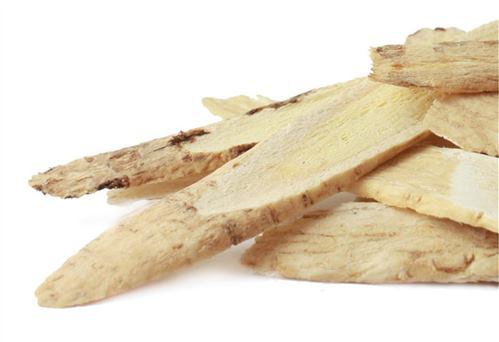
Astragalus is also called huang qi or milk vetch . It comes from a type of bean or legume. While there are multiple species of astragalus, most astragalus supplements contain astragalus membranaceus. The herb is said to offer multiple health benefits for multiple conditions, including heart benefits.
Astragalus appears to work by stimulating the immune system. It has antioxidant effects that inhibit free radical production. In the body, free radicals damage cells and are linked to many health problems associated with aging. There is, though, no known way to stop free radicals completely.
TIP : Are you suffering from liver problems? Astragalus is used as a general tonic to protect the liver – it may cure all liver related problems including chronic hepatitis.
Availability: Most good herbal remedy stores. (e.g. iHerb , Natures Remedy , Amazon )
Antibiotic Properties: Polysaccharides, choline, betaine, rumatakenin, [beta]-sitosterol. Astragalus has been used in Traditional Chinese Medicine for years because it’s an adaptogen which means that it’s great for helping the body against physical, mental and emotional stress. It is primarily used for upper respiratory infections .
Collection & Preparation: It is available as a tablet, capsule, powder or tincture. The root needs to be dried. Can also be made into a tea by mixing 3–6oz of dried root in 12oz of water.
Dosage: 200mg of powder twice a day. Tea can be taken three times a day. Tincture can be taken 3 times a day – mix 10-15 drops of tincture in half glass of water.
Possible Side Effects: Can make your immune system more active, so will have an impact on those who suffer from an auto-immune disease.
Contraindications: Do not use if pregnant or breast feeding, also avoid if you suffer from blood disorders.
Alternatives: N/A.
Other Uses: Dietary supplements, colds, arthritis, asthma, cancer, HIV, aids, energy levels, diarrhea, etc.
Watch the following video on Astragalus Root Benefits
14. Cat’s Claw

Cat’s Claw is an herb that has received very favorable but limited press. Word of mouth has boosted sales. But too few know enough about this miraculous yet inexpensive Peruvian mountain rain forest herb. The vine was named for the hooked thorns resembling cat claws on its twigs. Cat’s Claw, or una de gato , is technically known as uncaria tomentosa . It has been used traditionally for many centuries by Peruvian medicine men for a variety of ailments.
Cat’s Claw’s bark and roots provide most of its immune boosting qualities via oxindole alkaloids. These alkaloids enhance white blood cells’ ability to engulf pathogens and destroy them. However, there are two forms of these alkaloids.
TIP: Cat’s claw is best used for stomach ache but it is also used in treating all types of cancer.
Availability: Most good herbal remedy stores. (e.g. iHerb , Amazon )
Antibiotic Properties: Oxindole alkaloids which enhance the white cells ability to engulf pathogens and destroy them. It is great from protecting the body’s immune system. Cat’s Claw is primarily used for arthritis and to fight cold symptoms .
Collection & Preparation: It is available as a tea – by crushing the vines and mixing them with boiling water, capsule or tincture forms.
Dosage: 60–100mg per day of extract. 20-50 drops of tincture up to 3 times a day.
Possible Side Effects: Headaches, dizziness and vomiting. Can cause diarrhea if taken in excess.
Contraindications: Do not take if you suffer from low blood pressure, leukemia or auto-immune diseases. Also avoid taking during pregnancy or breast feeding.
Alternatives: N/A.
Other Uses: Bronchitis, asthma, digestive problems, cancer, colitis, anti-inflammatory, fungal issues, Crohn’s disease, allergies, etc.
Watch the following video on Cat’s Claw
15. Cranberry
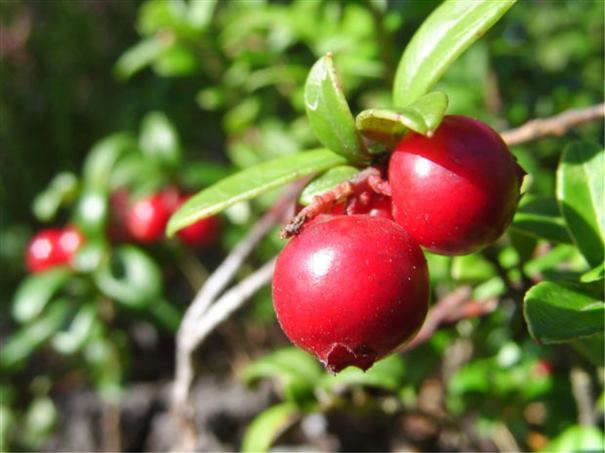
Unique, wild and natural by habitat, cranberries are rich in phyto-nutrients (naturally derived plant compounds), particularly proanthocyanidin antioxidants, which are essential for all-round wellness. The berries are indeed containing numerous chemical substances that may offer protection from tooth cavities, urinary tract infection, and inflammatory diseases. This berry plant is described as an evergreen dwarf, creeping shrub or a low-lying railing vine, belonging to the family of Ericaceae.
TIP : Did you know that Cranberries can combat oral problems like gingivitis and caries. It prevents the sticking of food and bacteria on the teeth. Take 2-3 tablespoons of cranberry juice and swish it in your mouth. Do it daily to prevent bacterial infections.
Availability: In most good health food and herbal remedy stores. (e.g. iHerb , Vitabiotics , Amazon )
Antibiotic Properties: Phenolic acids, proanthocyandins, flavanoids. Cranberries create a barrier to protect the urinary tract and is primarily used for urinary tract infections .
Collection & Preparation: Can be a juice, or the berries can be included in your diet. You can also buy capsules or tablets to be taken 2–3 times daily.
Dosage: 250ml of juice two times a day. Avoid excessive consumption.
Possible Side Effects: If you are prone to kidney stones, this possibility can be increased. Excess use may cause diarrhea.
Contraindications: Do not use if you’re taking warfarin – a blood thinning drug.
Alternatives: Barley or wheat grass juice.
Other Uses: Antioxidant, urinary tract infections, peptic ulcer, painful ejaculation, cardiovascular disease, gum problems, etc.
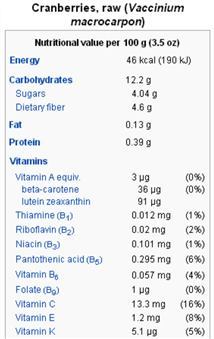
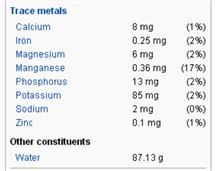
Watch the following video on Top 10 Benefits of Cranberry Juice
16. Elderberry
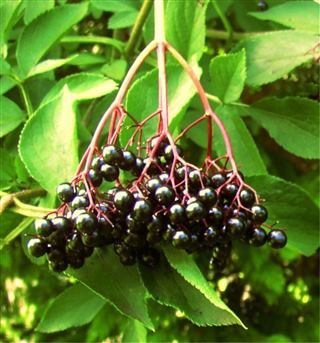
Used for its antioxidant activity, to lower cholesterol, improve vision, boost the immune system, improve heart health and for coughs, colds, flu, bacterial and viral infections and tonsillitis. Elderberry juice was used to treat a flu epidemic in Panama in 1995. Elderberries (Sambucus) have been a folk remedy for centuries in North America, Europe, Western Asia, and North Africa, hence the medicinal benefits of elderberries are being investigated and rediscovered.
Elderberries contain organic pigments, tannin, amino acids, carotenoids, flavonoids, sugar, rutin, viburnic acid, vitaman A and B and a large amount of vitamin C. They are also mildly laxative, a diuretic, and diaphoretic. Flavonoids, including quercetin, are believed to account for the therapeutic actions of the elderberry flowers and berries. According to test tube studies these flavonoids include anthocyanins that are powerful antioxidants and protect cells against damage.
Availability: In most good health food and herbal remedy stores. (e.g. iHerb , Lewtress , Amazon )
Antibiotic Properties: Carotenoids, falavoids, anthocyanins. Elderberries reduce the swelling in the mucous membranes so they’re primarily used for sinus infections .
Collection & Preparation: Can be taken as a juice or used in your food. You can also buy Elderberry liquid capsules.
Dosage: Take the juice extracts for no longer than 12 weeks or 15ml four times a day. Do not let up on the dosage as the elderberry must stay consistently in the body for it to do its job.
Possible Side Effects: Nausea, vomiting and severe diarrhea. Can decrease blood sugar.
Contraindications: Do not use if you suffer from auto-immune diseases or take immune system suppressants. Do not take if you use laxative.
Alternatives: N/A.
Other Uses: Reduces cancer cell formation, antioxidant, protects blood vessels, effective for bleeding, flu, facial neuralgia, rheumatoid arthritis, etc.
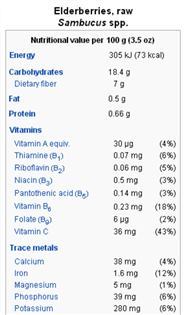

Watch the following video on Elderberry Health Benefits
17. Ginger
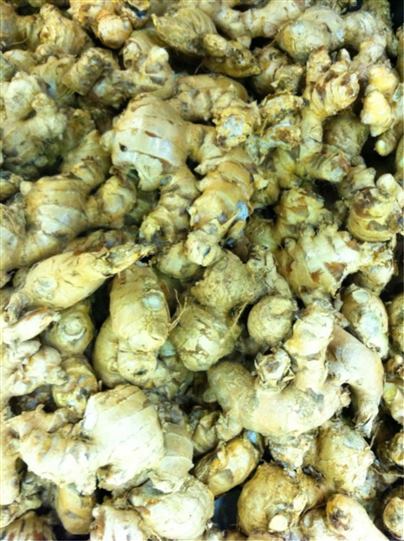
Ginger’s culinary qualities are a delight, but its health benefits are simply stunning. It has been shown to be more effective against bacterial staph infections than antibiotics. It can kill cancer cells, has brilliant anti-inflammatory effects, can resolve brain inflammations, and ease or cure a variety of gut problems, such as ulcerative colitis and acid reflux. Ginger can even alleviate the effects of gamma radiation.
Standard in many kitchens and cuisines, ginger is the seasoning that gives life to a host of dishes. It’s been used medicinally for more than 2,000 years. Though best known for its gastrointestinal soothing effects, that’s just the beginning of its uses. The plant parts used for both culinary and medicinal purposes are the rhizomes, the root-like stems that grow underground. The primary plant used medicinally is Zingiber officinale . Several compounds in ginger may be related to its health benefits, including shogaol, zingerone, and gingerols, which are similar to chili peppers capsaicin, noted for its pain relieving ability.
TIP : Did you know that Ginger boosts the immune system and treats hay fever? Add 2 to 3 small pieces of ginger into a cup of hot water. Boil for 5 to 6 minutes and strain well. Add a little of raw honey. Drink this tea 2 to 3 times a day for 2 weeks.
Availability : In most good health food and herbal remedy stores. (e.g. iHerb , Natures Best , Amazon )
Antibiotic Properties : Rhizome. Ginger has powerful anti-inflammatory properties which means that it primarily used as a pain reliever .
Collection & Preparation : Can be bought as food, drink, sweets, powder, capsules, tinctures and tablets. Ginger can be made into a tea by mixing a tablespoon of fresh grated ginger with boiling water.
Dosage : Capsules or tablets – 250mg four times a day. Avoid excessive consumption.
Possible Side Effects : Heart burn, stomach discomfort, extra menstrual bleeding, irritation. May cause high blood pressure if taken in high dosage.
Contraindications : Do not take if using warfarin, diabetes medication, heart medication or aspirin. Avoid ginger oil during pregnancy.
Alternatives : Honey.
Other Uses : Hay fever, allergies, nausea, vomiting, cancer, diabetics, ulcers, gastric distress, inflammation, radiation, high blood pressure, arthritis, angina, etc.
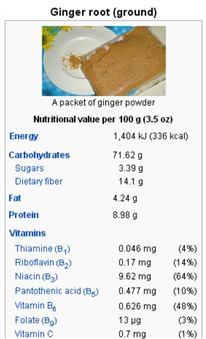

Watch the following video on How to Make Fresh Ginger Tea – Nature’s Antibiotic
18. Lemon Balm

Lemon balm is a member of the mint family and is considered a calming herb. This herb is also known as Melissa officinalis , and it has been used for centuries to reduce anxiety, promote sleep and improve symptoms of indigestion. Lemon balm has been researched by experts and found to offer many great health benefits.
Lemon balm is native to Europe but is commonly grown all over the world. It is often grown in herb gardens to attract bees which help pollinate the rest of the garden. The plant grows up to two feet and has light yellow flowers that grow where the leaves meet the stem. The leaves are similar in shape to mint leaves and have a tart and sweet smell like lemons.
This herb has been used by the ancient Greeks and Romans to treat insect bites and stings. The leaves give off a strong tart smell that insects do not like. The insect-repellent essential oils it contains include citronella and monoterpenaldehydes citral A and B. The essential oils that are released from the leaves are also used to treat insomnia, nervousness and anxiety.
TIP : Did you know that Lemon Balm cures herpes? Make leaf decoction of Lemon balm and apply it over cancer sores using a cotton bud.
Availability : In most good herbal remedy and health food stores. (e.g. iHerb , Natures Remedy , Amazon )
Antibiotic Properties : Citral, citronella, flavanoids. Lemon balm has been proven to reduce stress in the central nervous system, which means it is primarily used for dementia and Alzheimer disease.
Collection & Preparation : Available as a capsule or can be made into a tea by mixing 1oz of fresh lemon balm leaves with boiling water. Also available as essential oil or tincture.
Dosage : 80mg per day of powder (capsules), or 50-60 drops of tincture in water for no longer than four months. Can be taken as infusion of dried herb or fresh leaves (4 to 6 leaves). Drink twice a day.
Possible Side Effects : Abdominal pain, dizziness, wheezing, drowsiness.
Contraindications : Do not allow children under the age of 12 to take. Always consult a doctor before using it.
Alternatives : N/A.
Other Uses : Anxiety, sleep problems, stomach disorders, anemia, restlessness, high blood pressure, insect bites, etc.
Watch the following video on How to Make your Own Lemon Balm Tincture
19. Liquorice Root
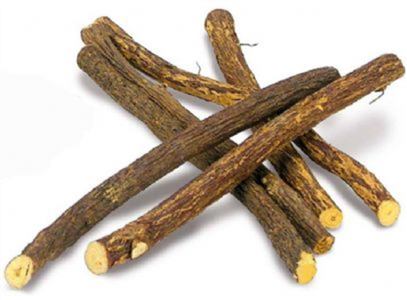
Liquorice root contains many anti-depressant compounds and is an excellent alternative to St. John’s Wort. As a herbal medicine it has an impressive list of well documented uses and is probably one of the most over-looked of all herbal wonders. Liquorice is useful for many ailments including asthma, athlete’s foot, baldness, body odour, bursitis, canker sores, chronic fatigue, depression, colds and flu, coughs, dandruff, emphysema, gingivitis and tooth decay, gout, heartburn, HIV, viral infections, fungal infections, ulcers, liver problems, Lyme disease, menopause, psoriasis, shingles, sore throat, tendinitis, tuberculosis, ulcers, yeast infections, prostate enlargement and arthritis.
TIP : Did you know that usually liquorice candy may not contain liquorice? It usually contains Anise oil.
Availability: Most good herbal remedy and health food shops. (e.g. Amazon , Holland and Barrett )
Antibiotic Properties: Glycyrrhizin which heals the mucous membranes of the digestive tract, making it great for healing the gastrointestinal system. Liquorice root is primarily used for stomach inflammation .
Collection & Preparation: Can be prepared in food or bought in medicinal tincture form, powder or capsules.
Dosage: 2ml of powdered root into a cup of water (boil it and simmer for 10 minutes). Drink three times a day. Avoid using for more than 6 weeks.
Possible Side Effects: High blood pressure, low potassium levels, fatigue, water and sodium retention. Edema, dizziness, may reduce libido.
Contraindications: Do not use if you suffer from high blood pressure, diabetes, hormone sensitive conditions, kidney disease, hypertonia, heart disease or are pregnant or breast feeding.
Alternatives: St. John’s Wort.
Other Uses: Cough, bronchitis, colitis, lower cholesterol, ulcers, skin disorders, liver problems, asthma, etc.
Watch the following video on Herb Liquorice or Liquorice Root
20. Mullein
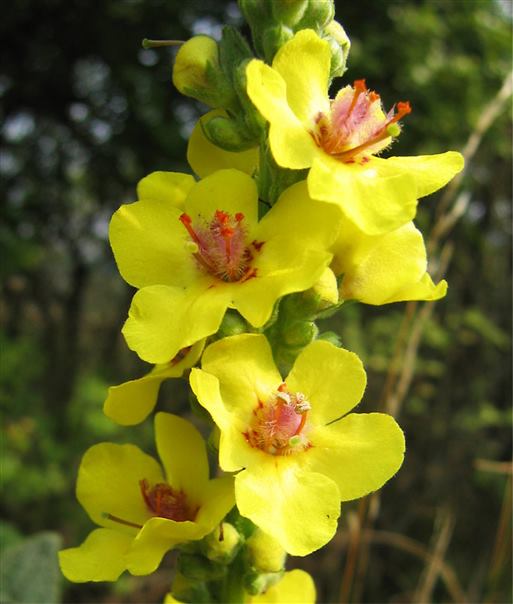
Verbascum, common name mullein (also known as velvet plant), is a genus of about 250 species of flowering plants in the figwort family Scrophulariaceae. They are native to Europe and Asia, with the highest species diversity in the Mediterranean. Mullein or “mullein leaf” often refers to the leaves of Verbascum thapsus , the great or common mullein, which is frequently used in herbal medicine.
TIP: Did you know that Mullein is very effective in getting rid of intestinal worms and other gastrointestinal issues?
Availability: Most good herbal remedy and health food shops. (e.g. iHerb , Amazon )
Antibiotic Properties: Verbascoside. Mullein’s mucilage and saponins ensures that it is a great herb for respiratory infections. It’s primarily used for bleeding and fever symptoms .
Collection & Preparation: Often served as medicinal tea. Can be bought as a capsule or tincture.
Dosage: Half a teaspoon of the powdered root or leaves in a cup of water. Boil and simmer it for 10 minutes. Drink 3 times daily. 1 teaspoon of tincture can be taken 2 times a day for 10 to 14 days.
Possible Side Effects: Skin irritation, breathing difficulties, stomach pain.
Contraindications: Do not use if you are pregnant or breast feeding.
Alternatives: N/A.
Other Uses: Whooping cough, tuberculosis, bronchitis, asthma, joint pain, gout, ear trouble, skin problems, etc.
Watch the following video on Medicinal Plant Mullein
21. Olive Leaf

Scientists have isolated the unique molecule that provides olive oil with its multitude of health and life-extending benefits. Known as oleuropein , it is the polyphenol that can help lower bad cholesterol and blood pressure, prevent cancer, protect against oxidative damage, and help guard against cognitive decline. Oleuropein provides the distinctive tangy, pungent, almost bitter flavor found in high quality extra virgin olive oils. It’s also responsible for most of olive oil’s antioxidant, anti-inflammatory, and disease-fighting characteristics. In fact, when oleuropein was given to animals with tumors, the tumors completely regressed and disappeared in 9 to 12 days.
The olive tree ( Olea europaea ) produces oleuropein abundantly in its leaves as well as in the olive fruit itself, and special processing techniques now allow for the extraction of a stable, standardized form of oleuropein. Olive leaf extracts and their oleuropein constituents are best known for their blood pressure-lowering effects, but the latest studies reveal their health benefits extend well beyond that. Additional anti-inflammatory and antioxidant properties offer promise in fighting atherosclerosis, diabetes, cancer, neurodegenerative diseases, and even arthritis.
TIP: Did you know that you can use olive oil for snoring? Simply put 1 drop of olive oil in both the nostrils before going to bed. To lower cholesterol levels, take one or two teaspoons olive oil daily.
Availability: Most good herbal remedy and health food shops. (e.g. iHerb , Amazon )
Antibiotic Properties: Oleuropein which breaks down the cell walls of pathogen bacteria. Olive Leaves are primarily used for lowering blood pressure and cholesterol .
Collection & Preparation: Can be consumed with food (olive oil) or purchased as a liquid extract.
Dosage: Liquid extract 30ml per day or with food 30–40g.
Possible Side Effects: Can affect respiration allergies or cause allergic reactions if applying on skin.
Contraindications: Do not use if pregnant, breast feeding or suffer from diabetes.
Alternatives: N/A.
Other Uses: High blood pressure, oral herpes, eczema, measles, insect bites, cancer, age-related diseases, arthritis, etc.
Watch the following video on the Medicinal Uses of Olive Leaf
22. Oregano

Oil of oregano, which is distilled from the flowers and leaves of the oregano plant, could be one of nature’s most powerful antibiotics. This natural and versatile oil can be used in multiple ways to help defend you from infection by dangerous bacteria.
Oil of oregano contains a compound called carvacrol , which has been shown to help break through the outer cell membranes that help protect bacteria from the immune system. Studies have shown that oil of oregano is effective at killing bacteria, and could also help the immune system take action against viruses, fungi and parasites.
TIP : Did you know that Oregano contains 42 times more antioxidants than apple? It is great anti-aging food. Also if you suffer from menstrual cramps, try chewing 4 to 5 fresh leaves of Oregano and you’ll have cramps no more.
Availability : Most good herbal remedy and health food shops. (e.g. iHerb , Puritan’s Pride , Amazon )
Antibiotic Properties : Carvacrol and thymol which break through the outer cell membranes to help kill bacteria. Oregano is primarily used for respiratory tract infections and candidiasis.
Collection & Preparation : It can be used in food, or bought as Oil and capsules.
Dosage : Use one part of Oregano oil diluted with two parts of Olive oil for external uses. For internal use, take 2-3 drops of Oregano oil in a cup of water.
Possible Side Effects : Can cause a reaction if you’re allergic to plants in the Lamaiceae family. It may also cause skin irritation and stomach upset.
Contraindications : Do not take if you suffer from bleeding disorders or diabetes. Avoid use in pregnancy and breast feeding.
Alternatives : N/A.
Other Uses : Muscle pain, athlete’s foot, dandruff, wrinkles, asthma, cuts and bruises, earaches, influenza, acne, varicose veins, etc.
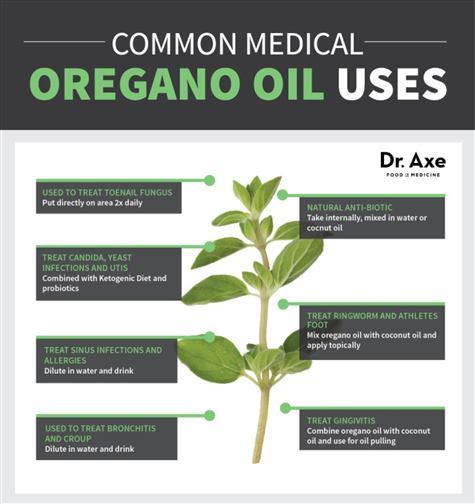
Watch the following video on Medicinal Uses of Oregano
23. Black Seed
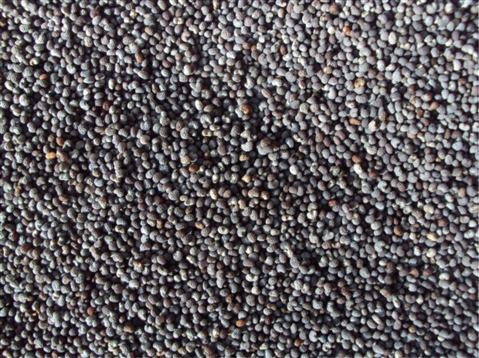
The seeds of the annual flowering plant, Nigella Sativa , have been prized for their healing properties since time immemorial. While frequently referred to among English-speaking cultures as Roman coriander, black sesame, black cumin, black caraway and onion seed, it is known today primarily as black seed, which is at the very least an accurate description of its physical appearance.
The earliest record of its cultivation and use come from ancient Egypt. Black seed oil, in fact, was found in Egyptian pharoah Tutankhamun’s tomb, dating back to approximately 3,300 years ago. In Arabic cultures, black cumin is known as Habbatul barakah , meaning the “seed of blessing.” It is also believed that the Islamic prophet Mohammed said of it that it is “a remedy for all diseases except death.”
TIP : Did you know that Black cumin seeds are healthy for women? It helps with proper menstruation and also enhances milk flow in lactating mothers. It is also advisable to use it immediately after a delivery because it helps to clean the uterus.
Availability : In most good herbal remedy and health food shops. (e.g. iHerb , Amazing Herbs , Amazon )
Antibiotic Properties : Thymoquinone, thymohydroquinone, dithymoquinone, thymol, carvacrol, nigellicine and alpha-hedrin – all of which work towards boosting your immune system. Black seed is mostly known for its work in HIV treatment . It is also used for pain relief .
Collection & Preparation : Mix the oil with another liquid, such as juice or yogurt. The seeds must be heated. It is also available as a powder.
Dosage : 3 teaspoons per day.
Possible Side Effects : Do not take if pregnant – black seed can prevent the uterus from contracting.
Contraindications : Do not take if you suffer from bleeding disorders, diabetes or low blood pressure. Consult a doctor before consuming.
Alternatives : N/A.
Other Uses : Sore throat, Headaches, asthma, hay fever, bronchitis, constipation, combating the side effects of chemotherapy, etc.
Watch the following video on Black Seed Oil
24. Acacia (Catechu)

Acacia trees have been known for thousands of years for their extremely strong wood, their medicinal properties and decorative uses. Hebrews considered acacia to be a sacred wood and there is even a legend according to which Christ’s crown of thorns was made of acacia.
Nowadays, acacia has become increasingly popular for its therapeutic properties and numerous herbalists recommend it as a natural remedy against a wide variety of disorders.
TIP : Did you know that Acacia can help you with obesity? Simply powder it, take a pinch and mix it in one glass of luke warm water. Drink twice a day for seven days. Do not use it for more than 7 days.
Availability : In most good herbal remedy stores. (e.g. iHerb , Puritan’s Pride , Amazon )
Antibiotic Properties : Staphylococcus, tusca which works as a fibre – aiding the digestive system. Acacia is primarily known for lowering cholesterol .
Collection & Preparation : Available in as seeds, powder, honey and a gum which needs to be combined with water to work successfully.
Dosage : 30g of powder daily for 6 weeks.
Possible Side Effects : Gas, bloating, nausea and loose stools, hypotension.
Contraindications : Do not take if pregnant or breast feeding.
Alternatives : N/A.
Other Uses : Weight loss aid, throat and stomach inflammation, skin diseases, eyes bloodshot, anemia, etc.
Click here for 7 uses of Acacia .
25. Aloe
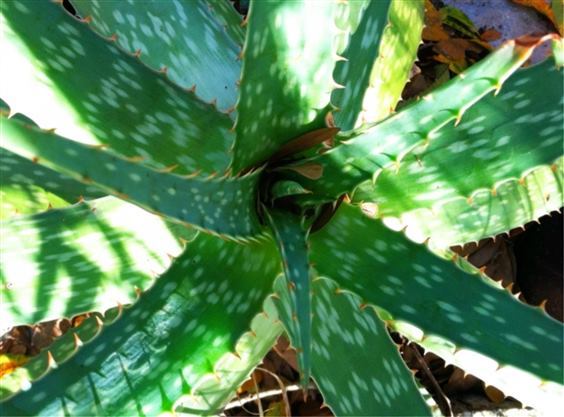
Aloe (often called Aloe Vera ) produces two substances, gel and latex, which are used for medicines. Aloe gel is the clear, jelly-like substance found in the inner part of the aloe plant leaf. Aloe latex comes from just under the plant’s skin and is yellow in color. Some aloe products are made from the whole crushed leaf, so they contain both gel and latex.
TIP : Aloe Vera contains Aloin which eases the effects of hangover. It reduces the problems like dried mouth, dehydration and headache. It also relaxes the nerves and prevents the conversion of alcohol into harmful substances.
Availability : In most good herbal remedy stores. (e.g. Puritan’s Pride , iHerb , Amazon )
Antibiotic Properties : Vitamin B12, phenolic compounds, saponins, amino acids, anthraquinones, sterols, and salicylic acid. These have a kerolytic effect on wounds – which helps remove dead tissue. It’s primarily used for skin issues .
Collection & Preparation : Available in various forms – gel, latex, cream or drinks.
Dosage : 100–200mg gel, 50mg aloe latex or 0.5g cream applied three times a day.
Possible Side Effects : Aloe latex can cause stomach cramps, low potassium, kidney problems, blood in urine and heart disturbances. It may also cause skin allergy.
Contraindications : Do not take if under 12 years old, suffer from Crohn’s disease, kidney or bowel problems or hemorrhoids. Avoid consuming Aloe Vera juice if pregnant.
Alternatives : N/A.
Other Uses : Burns, immune system boost, scars, ulcers, diabetes, cancer, hair loss, skin cell rejuvenation, obesity etc.
Watch the following video on Aloe Vera Health Benefits
26. Cryptolepis

Cryptolepis sanguinolenta is a species of flowering plant in the family Apocynaceae. An extract from the root is traditionally used in West Africa to treat malaria. The plant also has potential for treating Type II diabetes and is considered a powerful antibiotic.
Availability: In most good herbal remedy stores. (e.g. Amazon )
Antibiotic Properties: Alkaloids, isocryptolepine, quindoline and neocrytine which build up the body’s immune system and is primarily used for malaria .
Collection & Preparation: Available as a powder, capsules or a tincture.
Dosage: Sprinkle powder on affected area, take two capsules twice a day and use tincture twice daily.
Possible Side Effects: Sickness and nausea.
Contraindications: Do not use if pregnant or breast feeding.
Alternatives: N/A.
Other Uses: Gonorrhea, TB, urinary tract infections, insomnia, colic, diarrhea, wounds, etc.
27. Eucalyptus

Eucalyptus oil is a pure essential oil that has practical and industrial uses, as well as healing properties. It comes from a fast-growing evergreen tree native to Australia, with global eucalyptus oil production mainly from Eucalyptus globulus or “Blue Gum.”
Eucalyptus oil is the distilled oil that comes from the dried leaves of eucalyptus – a colourless liquid with a strong woody and sweet smell. There are more than 700 different species of eucalyptus in the world, of which at least 500 produce a type of essential oil.
TIP: Did you know that eucalyptus is highly effective in helping with your asthma symptoms? Simply put 3-4 drops of Eucalyptus oil on a paper towel and keep it by your head while sleeping.
Availability: In most good herbal remedy shops. (e.g. iHerb , Naissance , Amazon )
Antibiotic Properties: Flavonoids and volatile oils which kill bacteria. Eucalyptus is primarily used for respiratory support (blocked nose, cough, and sinusitis).
Collection & Preparation: Available as an oil, essential oils, cough drops and as a flavoring agent.
Dosage: Ensure oil products contain no more than 25% eucalyptus. External use is recommended. For cough add a few drops of Eucalyptus oil in boiling water. Inhale the steam for 10 minutes twice a day.
Possible Side Effects: Nausea, vomiting, diarrhea, headache.
Contraindications: Do not take if pregnant, breast feeding or suffer from diabetes, high blood pressure or epilepsy. Avoid applying over wounds, cuts or broken skin. Always consult doctor before using it.
Alternatives: N/A.
Other Uses: Upset stomach, asthma, herpes, malaria, fever, bronchitis, whooping cough, gallbladder problems, cancer, oral health, etc.
Watch the following video on Eucalyptus Oil Benefits
28. Goldenseal
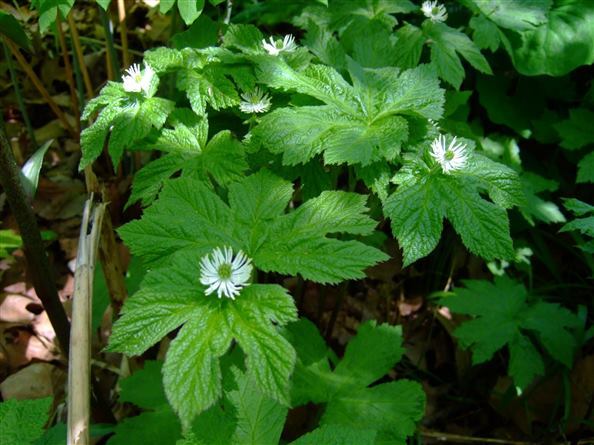
Goldenseal is one of the most popular herbs sold on the American market and has recently gained a reputation as a herbal antibiotic and immune system enhancer. American Indians used goldenseal as a medication for inflammatory internal conditions such as reparatory, digestive and genito-urinary tract inflammation induced by allergy or infection. The Cherokee used the roots as a wash for local inflammations, a decoction for general debility, dyspepsia, and to improve appetite. The Iroquois used a decoction of the root for whooping cough, diarrhea, liver disease, fever, sour stomach, flatulence, pneumonia, and with whiskey for heart trouble. They also prepared a compound infusion with other roots for use as drops in the treatment of earache and as a wash for sore eyes.
TIP : If you suffer from digestive track disorders, try using Goldenseal. It is a good herb to cure peptic ulcers, heartburn, diarrhea and constipation.
Availability: In most good herbal remedy stores. (e.g. iHerb , Amazon )
Antibiotic Properties: Hydrastine, berberine, canadine, canadaline, and l-hydrastine all of which work to kill bacteria. Goldenseal primarily works to aid your digestive system .
Collection & Preparation: Available as a tablet, capsule, extract or tincture.
Dosage: 0.5 to 1 gram tablets or capsules, 0.3 to 1 milliliter of liquid/fluid extract or 10 to 20 drops of tincture – all taken two-three times a day. Do not take on empty stomach.
Possible Side Effects: Numbness, sickness, diarrhea, allergic reactions on skin or throat problems.
Contraindications: Do not use if pregnant, breast feeding or in newborn babies. Avoid using if the following health issues exist: blood pressure problems, heart problems, diabetes, glaucoma. Avoid use if allergic to ragweed. Consult a doctor before taking it.
Alternatives: N/A.
Other Uses: Food poisoning, cold and flu, eczema, cough, sinusitis, constipation, cancer, hay fever, hemorrhoids, chronic fatigue, liver problems, arrhythmia, prostatitis, etc.
Watch the following video on All About Goldenseal Root
29. Grapefruit Seed Extract
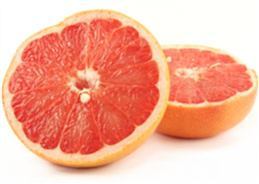
Grapefruit Seed Extract is a liquid substance extracted from the fruit and seeds of grapefruit, a sub-tropical citrus tree that grows in abundance throughout many countries. The extract from grapefruit seed was first documented for its medicinal uses in 1972 by Dr. Jacob Harich, a physicist who noticed its traditional use as a disinfectant in a multitude of countries. Many traditional societies, from South America to Europe, to Asia have used the extract to clean the skin, hair, and home surfaces. These societies also valued the extract as a powerful anti-viral and bacterial.
TIP : Grapefruit contains Benzalkonium Chloride, which reduces infection from the ears and provides relief from earache. Pour 1 or 2 drops of fresh grapefruit juice in the affected ear. Do this twice a day for 5 to 7 days.
Availability: In most good health food and herbal remedy stores. (e.g. iHerb , Simply Supplements , Amazon )
Antibiotic Properties: Citrus racemosa which fights parasitic organisms and works well against a variety of bacterial infections. Grapefruit Seed Extract is primarily used to harden arteries in atherosclerosis sufferers.
Collection & Preparation: Available in a cream, juice, capsules or tincture.
Dosage: No more that 1500mg per day.
Possible Side Effects: Be careful with use if you’re a postmenopausal woman, as in excess it can increase your chances of getting breast cancer by 25–30%.
Contraindications: Do not use if you’re suffering from breast cancer or other hormone sensitive cancers.
Alternatives: Citrus Seed Extract.
Other Uses: Candidiasis, yeast infections, cancer, psoriasis, bronchitis, hay fever, hair growth, fungal nails, ear problems, sore throat, gingivitis, depression, lung treatments, etc.
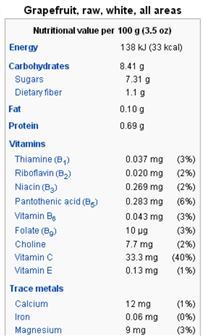

Watch the following video on Grapefruit Seed Extract
30. Juniper
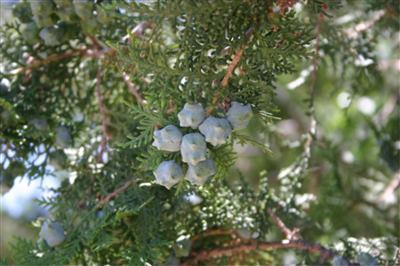
With their warming, stimulating, and disinfecting actions, juniper berries have many medicinal uses. Juniper berries have an antiseptic effect and are often used in cases of chronic and repeated urinary tract infection. They are used in between flare-ups in those with frequent infections but not for acute cases of bladder infection.
Juniper stimulates urinary passages, causing the kidneys to move fluids faster. This is helpful if your kidneys are working sluggishly (such as with renal insufficiency) and if urine is not flowing freely. But such stimulation would be disastrous if you had a raging kidney infection. Because of the myriad dangers, juniper must be used judiciously, starting with small, cautious dosages, and only under the supervision of an experienced practitioner. It also may be used for prolapse and weakness of the bladder or urethra.
TIP : Juniper berry is a good remedy for skin problems. It removes toxins from the blood and cures acne and eczema. It can also cure other skin problems like Athlete’s foot and dandruff.
Availability: In most good herbal remedy stores. (e.g. iHerb , Natures Sunshine , Amazon )
Antibiotic Properties: Thujine and terpenine which form an antiseptic barrier making them great for kidney ailments. Juniper is primarily used for digestive disorders and it’s extremely effective for enlarged prostate problems.
Collection & Preparation: Available as an oil, tincture, or as berries which can be used in food.
Dosage: 20–100mg of the essential oil, 2–10g of the berries.
Possible Side Effects: Skin and respiratory allergic reactions can occur. It may also cause stomach upset.
Contraindications: Do not use if pregnant or breast feeding. Avoid use if you suffer from diabetes, kidney diseases, stomach and intestinal disorders or blood pressure issues.
Alternatives: N/A.
Other Uses: Heartburn, indigestion, urinary tract infections, asthma, bronchitis, joint pain, kidney and bladder stones, skin problems, etc.
Watch the following video on Juniper Berry Fruits Health Benefits
31. Sage
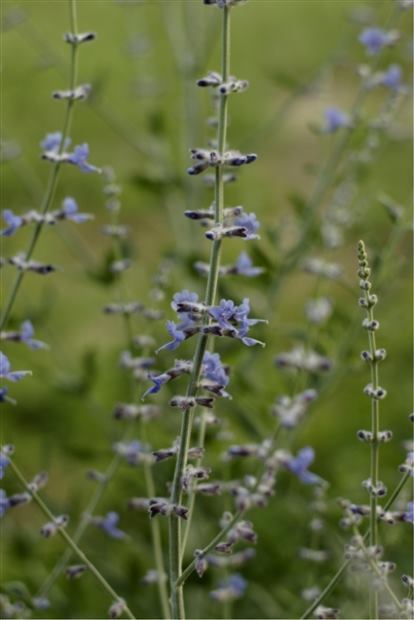
Sage is a herb native to the Mediterranean, belonging to the Lamiaceae (the mint) family along with other herbs, such as oregano, lavender, rosemary, thyme, and basil.
The herb has gray leaves up to 2.5 in long (6.4 cm) and flowers that are usually blue, purple, white or pink. Because of its unique pleasant aroma sage is often used as a fragrance in soaps and cosmetics. Sage is used in medicine to help alleviate symptoms of digestive problems and mental disorders, such as Alzheimer’s and depression.
TIP : Did you know that Sage slows down the brain aging and speeds up the transmission of brain signals? Chew 2-3 leaves of sage or have a cup of tea made from the leaves of sage once a day to enhance memory.
Availability : In most good herbal remedy stores. (e.g. Healthspan , iHerb , Amazon )
Antibiotic Properties : Escherichia coli, salmonella typhi, s. enteritidis, and shigella sonei which have the power to constrict, so it is primarily used for stomach issues and candidiasis .
Collection & Preparation : Available as a capsule, cream or a herb for food. Can be made into a tea by placing a teaspoon of powdered or fresh sage in boiling water. Can be made into a tonic by pouring a quart of boiling water over a handful of leaves and leave it to stew overnight.
Dosage : 1–2.5g three times a day.
Possible Side Effects : Restlessness, irritability, headaches, stomach upset, dizziness, epilepsy.
Contraindications : Do not use if you suffer from diabetes, epilepsy, high blood pressure or seizure disorders also if pregnant or breastfeeding.
Alternatives : Rosemary.
Other Uses : Sore throat, stomach pain, difficult menses, cold, menopause side effects, bloating, memory loss, overproduction of saliva, Alzheimer, etc.
Watch the following video on Health Benefits of Sage
32. Wormwood
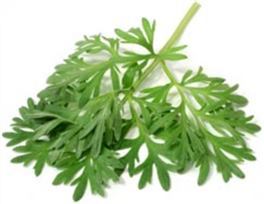
Wormwood has been used in herbal remedies to rid the body of pinworms, roundworms, and other parasites. And if you’ve got one, chances are, you’re eager to see it go. However, it can also be used to enhance digestion for the worm-free.
The most common use for this bitter herb is to stimulate the digestive system. You may be familiar with the practice of taking bitters before meals to aid digestion. A bitter taste in the mouth triggers release of bile from the gallbladder and other secretions from intestinal glands, which enables us to digest food.
People with weak digestion or insufficient stomach acid may benefit from taking wormwood preparations before meals. Wormwood, however, may cause diarrhea. Its secretion-stimulating qualities make the intestines empty quickly. Because wormwood also contains a substance that is toxic if consumed for a long time, it is used only in small amounts for a short time.
TIP : Wormwood is great remedy to expel out Ascaris. Make a powder of Wormwood and take one tablespoon two times a day.
Availability: Most good herbal remedy stores. (e.g. iHerb , Amazon )
Antibiotic Properties: Thujone and isothujone which work to stimulate the gallbladder making it extremely beneficial to the digestive system. Wormwood is primarily used for stomach upset and digestive disorders .
Collection & Preparation: Available as a powder for tea, a capsule, a tablet, tincture or essential oil.
Dosage: Tea = 1 teaspoon of wormwood powder in hot water for 15 minutes. Drink before meals. Capsule = one before meal times (three times a day). Tincture = 1/8 of a teaspoon before meals. Do not take in large doses.
Possible Side Effects: Thirst, numbness, sickness, restlessness, nightmares, nausea, diarrhea and kidney issues. Prolonged use may prove toxic.
Contraindications: Do not use if you suffer from allergy to ragweed, kidney disorders, seizure disorders, porphyria or are pregnant or breast feeding.
Alternatives: N/A.
Other Uses: Gall bladder problems, insect bites, liver disease, worm infections, anemia, Candida Albicans, etc.
Watch the following video on Wormwood Oil Health Benefits
33. Thyme
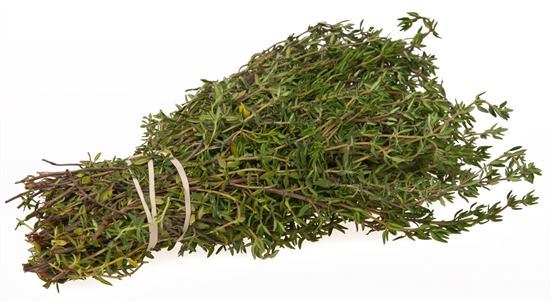
Thyme is an herb with culinary, medicinal and ornamental uses. Thyme is of the genus Thymus, the most common being Thymus vulgaris. The flowers, leaves and oil of thyme are commonly used by people for the treatment of bedwetting, diarrhea, stomach ache, arthritis, colic, sore throat, cough (including whooping cough), bronchitis, flatulence and as a diuretic (to increase urination).
TIP : Did you know that thyme stimulates and tones up the nervous system, such as neurasthenia, depression, nightmares, nervous exhaustion, insomnia and melancholy.
Availability: Most good health food and herbal remedy stores. (e.g. iHerb , Amazon )
Antibiotic Properties: Thymol which works to suppress inflammatory cyclooxygenase-2 which means Thyme is primarily used for coughs, colds and feverish symptoms .
Collection & Preparation: Can be used in food, or available as an oil or tincture. Can be made into a tea by mixing the leaves with boiling water, which can make a great replacement for coffee for a healthier lifestyle. Thyme oil is considered to be highly toxic and should not be taken internally.
Dosage: 8 For cough – syrup of thyme can be taken orally for 5 days, for upper respiratory track infections – a tea made by 1-2 grams of dried herb in 150 ml of boiling water for 10 minutes. Drink several times daily. Other uses – 20-40 drops of liquid extract three times daily in juice; 40 drops of tincture up to 3 times daily.
Possible Side Effects: Digestive system upset, headache, dizziness.
Contraindications: Do not take if you suffer from oregano allergies; suffer from bleeding disorders, heart problems, epilepsy, high blood pressure and hormone sensitive disorders. Avoid during pregnancy and breast feeding.
Alternatives: Oregano.
Other Uses: Acne, colic, anemia, asthma, gastrointestinal disorders, yeast infection, cancer, snakebites, skin issues, neuralgia, etc.
Watch the following video on Thyme Plant – Health Benefits
34. Green Tea
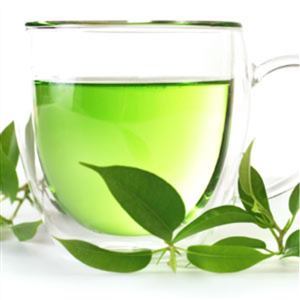
Green tea has been used in traditional Chinese medicine for centuries to treat everything from headaches to depression. The leaves are supposedly richer in antioxidants than other types of tea because of the way they are processed.
Green tea contains B vitamins, folate (naturally occurring folic acid), manganese, potassium, magnesium, caffeine and other antioxidants (notably catechins). All types of tea (green, black and oolong) are produced from the Camellia sinensis plant using different methods. Fresh leaves from the plant are steamed to produce green tea, while the leaves of black tea and oolong involve fermentation. Green tea is alleged to boost weight loss, reduce cholesterol, combat cardiovascular disease, and prevent cancer and Alzheimer’s disease.
TIP : Did you know that green tea is much better than coffee? Here’s why:
- More anticancer and antioxidant compounds in green tea.
- Green tea is low in calorie, it boosts the metabolism and fights obesity.
- Hydrates the body faster than coffee.
- The energy provided by green tea lasts longer!
- Green tea calms the nerves and relaxes the brain. It’s an ideal anti-stress remedy.
- Green tea promotes bone formation and reduces risk of osteoporosis.
- Green tea builds the immunity against infections, viruses and germs.
Availability: In most good health food and herbal remedy stores.
Antibiotic Properties: Camellia Sinensis which actually works well alongside conventional antibiotics to fight off bugs. Green Tea is primarily used for high blood pressure and digestive disorders .
Collection & Preparation: Available as tea leaves or tea bags. Brew the tea by mixing 20z of leaves with 6oz of water. Green tea is also available as a capsule or tablet to be taken 3–4 times daily.
Dosage: No more than 3 cups a day.
Possible Side Effects: Headaches, nervousness, sleep problems, constipation, dizziness and irritability.
Contraindications: Do not use if pregnant or breast feeding or suffer from blood pressure issues. Do not exceed 2 cups a day if suffering from anxiety disorder or irregular heart rate.
Alternatives: N/A.
Other Uses: Cataract, dental diseases, Rosacea, cancer, obesity and weight loss, baldness, cholesterol, Alzheimer’s, etc.
Watch the following video on Green Tea’s Ability to Increase Antibiotic Effectiveness
35. Ashwagandha (Withania Somnifera)
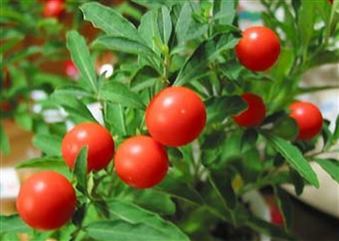
Ashwagandha is one of the most powerful herbs in Ayurvedic heaing. It has been used since ancient times for a wide variety of conditions and is most well-known for its restorative benefits. In Sanskrit, Ashwagandha means “the smell of a horse” indicating that the herb imparts the vigour and strength of a stallion. It has traditionally been prescribed to help people strengthen their immune system after an illness.
Belonging to the same family as the tomato, Ashwagandha is a plump shrub with oval leaves and yellow flowers. It bears red fruit about the size of a raisin. The herb is native to the dry regions of India, northern Africa and the Middle East. Today it can also be found in more mild climates, such as the US.
TIP: Are you facing problems with poor memory, are you stressed from your day to day work? The solution is Ashwagandha. It relaxes the body, minimizes chronic stress and enhances the learning power by retaining the memory. It will also enhance stamina, strength and energy of the body.
Availability: In most good herbal remedy stores. (e.g. iHerb , Amazon )
Antibiotic Properties: Glycoprotein which helps calm the brain, reduce swelling and boosting the immune system. Ashwagandha is primarily used for stress relief and hypothyroidism .
Collection & Preparation: Traditionally, ashwagandha is taken in a powder form, but it can also be taken as capsules. A level teaspoon of the powder of the herb can be boiled in a cup of milk for ten minutes over a low flame and then taken with a teaspoon of a natural sugar (like honey) and a quarter-teaspoon of a spice like cinnamon or ginger. A half-teaspoon of clarified butter (ghee) can be added to enhance the herb’s effect.
Dosage: Initially begin with smaller dose to see if it suits your body. Take 2 grams twice a day from one to three months. It is advised to take a break of one or two weeks after consuming it for 2 straight months. For leaves in powder take 3 to 5g; for root in powder form – take 1/4 to 1/2 of tablespoon.
Possible Side Effects: Stomach upset, diarrhea and vomiting, drowsiness, low blood pressure, lower blood sugar, abdominal pain, shallow breathing.
Contraindications: Do not use if you suffer from diabetes, congestion, blood pressure issues, stomach ulcers or auto-immune diseases. Avoid during pregnancy or breast feeding. Do not take ashwagandha if you’re allergic to it (if you’re unable to digest tomatoes, potatoes or peppers – you should avoid this herb). Ashwagandha may adversely affect the actions of some medications, hence you should consult your doctor before taking it.
Alternatives: Shatavari.
Other Uses: Alzheimer, anxiety, fatigue, lack of concentration, stabilizes blood sugar, lower cholesterol, anemia, cancer, anorexia, arthritis, etc.
Watch the following video on Top 5 Benefits of Ashwagandha
36. Atractylodes

Atractylodes is an important and great energy tonic which is famous for regulating the digestive functions and as a powerful energy booster. Atractylodes is one of the most important and commonly used herbs used in Chinese tonic herbalism. It is found in the majority of formulations that are designed to build Qi. Though the herb is not rare and therefore is not expensive, it is highly regarded.
Availability : In most good herbal remedy stores. (e.g. Amazon )
Antibiotic Properties : Cangzhu, which works alongside your immune system, making it great for stomach upset. Atractylodes is primarily used for indigestion and other digestive disorders .
Collection & Preparation : Available in medicinal form (powder, tincture or essential oil).
Dosage : 10–30 drops of tincture, two to three times a day. It is considered safe when not exceeds 1.32 grams daily and taken up to seven weeks.
Possible Side Effects : Nausea, dry mouth and bad taste in your mouth.
Contraindications : Do not use if you’re allergic to ragweed or you have yin deficiency with heat signs and extreme thirst. Avoid use during pregnancy and breast feeding.
Alternatives : A. chinensis, A. japonicum, and A. ovate.
Other Uses : Repeated miscarriage, weight loss due to cancer, bloating, cancer, joint pain, etc.
Watch the following video on White Atractylodes
37. Ginseng
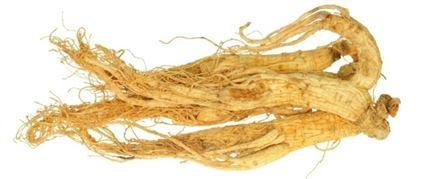
Ginseng has traditionally been used for a number of medical conditions. However, only a fraction of them have been seriously researched. There are two main types of ginseng: Asian or Korean ginseng (Panax ginseng ) and American ginseng (Panax quinquefolius ). Studies have found that the different types have different benefits. In traditional Chinese medicine, American ginseng is considered less stimulating than the Asian variety. Although many other herbs are called ginseng – like eleuthero, or Siberian ginseng – they do not contain the active ingredient of ginsenosides.
TIP: Did you know that Ginseng helps to avoid early aging? The herb has mental stimulant effect in the aged people and bolsters the memory and cognitive power in the elderly. It also energizes the body and relieves from tiredness.
Availability: In most good herbal remedy stores. (e.g. iHerb , Simply Supplements , Amazon )
Antibiotic Properties: Ginsenosides, which works on many of the areas the body and helps improve the body’s resistance to stress and increases vitality. Ginseng is primarily used to fight respiratory tract infections, debility and diabetes .
Collection & Preparation: Available as a capsule, powder, tincture, tablet or can be taken as a tea from fresh root or dried root powder.
Dosage: Dry root - 1g daily and don’t take for longer than three months at a time. Then a break of 1 week to 3 months is recommended.
Possible Side Effects: Nervousness, insomnia, anxiety, hypertension, rise in blood sugar, edema, headaches and stomach upset.
Contraindications: Do not take if you suffer from diabetes, autoimmune diseases, are on warfarin or antidepressants or experience and acute fever or sore throat. Avoid while pregnant or breast feeding. Not recommended for children or if you plan surgery within 10 days or less. Always discuss with health practitioner before using it.
Alternatives: Rhodiola.
Other Uses: Stress, fatigue, to increase energy levels, anemia, anti-aging, diabetes, cold, Alzheimer, heart diseases, high cholesterol, cancer, fibromyalgia, etc.
Watch the following video on Health Benefits of Ginseng
38. Greater Celandine
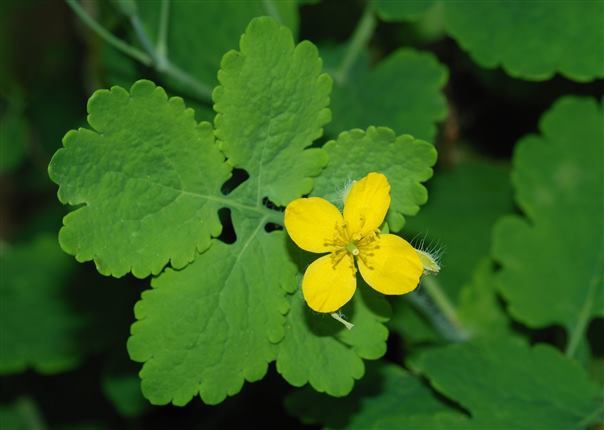
Chelidonium Majus , or greater celandine, has a long history of use in many European countries. Ancient Greeks, Pliny the Elder and Dioscorides all called celandine an effective detoxifying agent. The Romans used celandine as a blood cleanser. The French herbalist Maurice Mességué cited celandine tea for help with liver problems. Its use also extends to traditional Chinese medicine, and it’s become an important part of western phytotherapy. Extracts of greater celandine have exhibited a broad spectrum of toxicity to harmful organisms as well as liver protecting activity. This has led to the inclusion of greater celandine in liver and gallbladder cleansing and support protocols.
TIP : This herb is very effective in treating warts. Apply the fresh juice with a cotton ball 2-3 times a day. The juice is toxic and may blister the skin, hence dab no more than 2 or 3 warts at a time.
Availability : In most good herbal remedy stores. (e.g. iHerb , Amazon )
Antibiotic Properties : Alkanoids and flavonoids which encourage a stronger immune system and aids digestion. Greater celandine is primarily used for digestive tract issues .
Collection & Preparation : Available as a cream or a tincture. The roots are used to create this medicine.
Dosage : The cream can be applied as needed. The tincture 10-20 drops twice a day for four weeks.
Possible Side Effects : The cream can cause a skin rash. High dosage can cause breathing problems, sleepiness and coughing.
Contraindications : Do not use if you suffer from auto-immune diseases, diarrhea, liver disease, hepatitis or if you have a bile duct blockage. Avoid giving to children also if pregnant or breast feeding.
Alternatives : N/A.
Other Uses : Jaundice, high blood pressure, hepatitis, cancer, anxiety, arthritis, warts, IBS, constipation, menstrual cramps, pain, etc.
Watch the following video on Celandine Herb Benefits
39. Shatavari
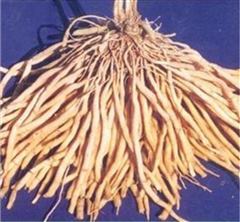
Shatavari – or asparagus racemosus – is a climbing plant which grows in low jungle areas throughout India. It is a sweet and bitter herb, which the Indian’s consider as the women’s equivalent to Ashwagandha. The name ‘Shatavari’ translates to “she who possesses 100 husbands”, which refers to the herbs rejuvenative effect on the female reproductive organs. In fact, the healing qualities of Shatavari are useful for a wide range of ailments in both men and women.
TIP : Did you know that Shatavari reduces the regular complaints of women? It is helpful to women in all aspects: tones the system and supports the women at the beginning of menses, ovulation, strengthening the uterine during pregnancy, baby birth and induces lactation.
Availability: In most good herbal remedy stores. (e.g. iHerb , Pukka , Amazon )
Antibiotic Properties: Arurveda which increases antibacterial activity in the body making it great for fighting off and preventing bacterial infections. Shatavari is primarily used for digestive tract issues or hysterectomy and oophorectomy .
Collection & Preparation: Available as a powder, juice or in tablet or capsule form.
Dosage: 1/2–1 teaspoon of the powder mixed with milk twice daily. Tablets and capsules to be taken 2–3 times daily.
Possible Side Effects: Dizziness, fatigue and weight gain.
Contraindications: Do not use if suffer from kidney disorders or lung congestion. Always consult a doctor before using it.
Alternatives: Ashwagandha.
Other Uses: Fluid retention, menstrual disorders, dysentery, stress, diarrhea, rheumatism, headaches, coughs, alcohol withdrawal, etc.
Watch the following video on Shatavari Benefits and Uses
40. Shiitake
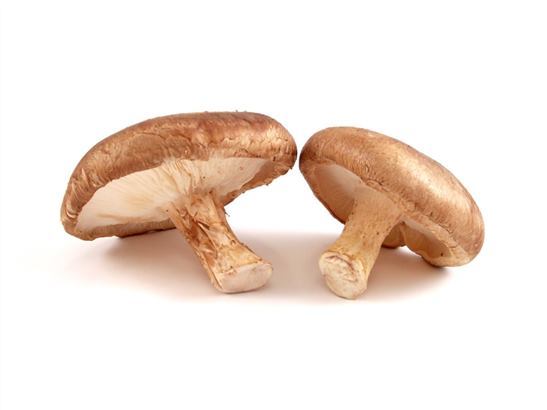
A symbol of longevity in Asia because of their health-promoting properties, shiitake mushrooms have been used medicinally by the Chinese for more than 6,000 years. More recently, their rich, smoky flavor has endeared them to American taste buds. These exotic hearty mushrooms can now be found in supermarket shelves across the U.S. throughout the year.
Like other mushrooms, these specialty mushrooms are as mysteriously unique as they are delicious. While often thought of as a vegetable and prepared like one, mushrooms are actually a fungus, a special type of living organism that has no roots, leaves, flowers or seeds.
Availability : In most good health food and herbal remedy stores. (e.g. iHerb , Swanson , Amazon )
Antibiotic Properties : Lentinula edodes which kills off a wide range of pathogen bacterial. Shiitake is primarily used to work against immune system failure .
Collection & Preparation : Can be consumed with food, or taken as an extract or capsules and powder.
Dosage : Extract = 1–3g taken three times a day. 6 to 16g of the whole, dried shiitake mushroom can be ingested daily. Capsules can be taken 3 times daily for 6 months and 4g of shiitake powder for 10 weeks.
Possible Side Effects : Stomach discomfort, diarrhea, inflammation, skin reactions, breathing problems. It may cause bladder cancer.
Contraindications : Do not use if you suffer from auto-immune diseases or eosinophilia. Avoid if pregnant or breast feeding.
Alternatives : Maitake.
Other Uses : Cholesterol levels, tumors, cancer, bronchitis, angina, asthma, flu, anti-aging, etc.


Watch the following video on The Health Benefits of Shiitake Mushrooms
41. Ginkgo Biloba
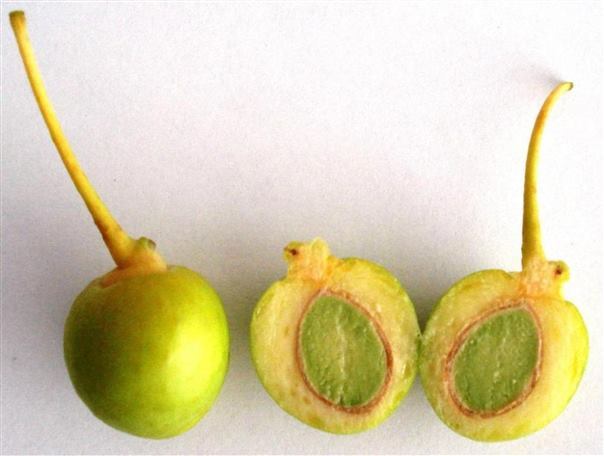
Ginkgo biloba, also known as Maidenhair , has been traced back nearly 300 million years making it the oldest surviving tree species on earth. The Chinese have used the plant medicinally for eons but many of the modern applications come from the research of German scientist. Ginkgo is a prescription herb in Germany.
Ginkgo extract has proven benefits to elderly persons. This ancient herb acts to enhance oxygen utilization and thus improves memory, concentration, and other mental faculties. The herbal extract has also been shown to significantly improve long-distance vision and may reverse damage to the retina of the eye. Studies have also confirmed its value in the treatment of depression in elderly persons. The ginkgo extract may provide relief for persons with headache, sinusitis, and vertigo. It may also help relieve chronic ringing in the ears known as tinnitus.
TIP : Did you know that this herb helps with deep vein thrombosis? Ginkgo dilates the blood vessels and helps to improve the blood flow. The flavonoids present in Gingko reduces the numbness and swelling in the legs due to the deep vein thrombosis. Take Gingko capsules of 60mg twice a day for a month.
Availability : In most good herbal remedy stores. (e.g. iHerb , Woods Supplements , Amazon )
Antibiotic Properties : Ginkgoloids, bilobalids and flavonoids which improve blood circulation and kills bacteria. Ginkgo Biloba is primarily used for diseases that slow the body down .
Collection & Preparation : Available in capsule, tincture and tablet form.
Dosage : 120–240mg per day. The dosage depends on the illness you are trying to combat. It is recommended to reduce the dose after 10 days.
Possible Side Effects : Stomach upset, headache, dizziness, drowsiness, constipation, forceful heartbeat, high or low blood pressure and allergic skin reactions.
Contraindications : Do not use if you suffer from diabetes, seizures, infertility, bleeding disorders or for children. Avoid if pregnant or breast feeding.
Alternatives : N/A.
Other Uses : Atherosclerosis, dizziness, tinnitus, impotence, dementia, Lyme disease, vertigo, mood disturbances, Alzheimer, asthma, Raynaud’s syndrome, etc.
Watch the following video on Ginkgo Biloba Health Benefits
42. Neem (Margosa)
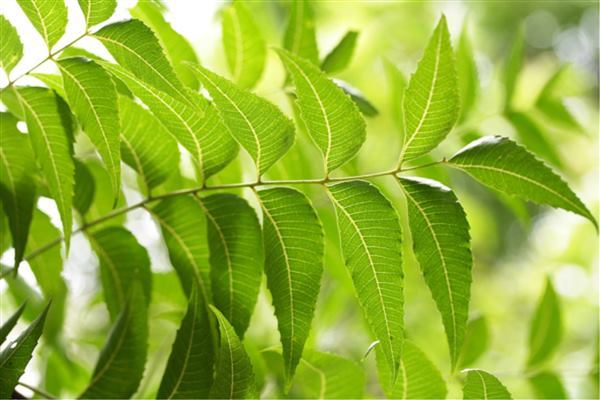
The ancient Neem tree of Asia has been the source of natural medicinal extracts for thousands of years. Indian history documents farmers having purposefully tended to and harvested Neem trees for their beneficial uses as far back as the Vedic period, 1500-600 B.C. Until recent history, the Neem has been used internally and externally in the traditional Ayurvedic herbal healing treatments in India. The last half century has seen the expansion of this herbal product into other parts of the world where European and American scientists have begun studies on the potential medical benefits of Neem.
With a history that spans from the beginning of Hinduism through the modern era, the Neem tree has proven itself to be a valuable herbal aid for daily living and for the support of ailments and irritants. As more studies are done with positive results and more people learn about Neem, its uses will become more a part of many individuals’ daily health regiments.
TIP : Did you know that Neem has been used since ancient times to treat many skin problems. It has a soothing effect on irritating skin and acts as a nutritive tonic to the skin by treating eczema, dandruff, rashes and ringworm. It is used as a face pack to cure pimples, redness and scars. To treat skin diseases, take 250 grams of Mustard oil in an iron pan and boil it. Add 50 grams soft Neem leaves in the boiling oil and let the leaves turn black. Cool the oil, strain and apply on the affected area three times a day.
Availability: In most good herbal remedy stores. (e.g. The Neemteam , iHerb , Amazon )
Antibiotic Properties: Sulphurous compounds, polyphenolics such as flavonoids and their glycosides, dihydrochalcone, coumarin and tannins, aliphatic compounds which wok to boost your body’s immune system making them great for liver problems. Neem is primarily used for cardiovascular diseases and skin problems .
Collection & Preparation: Available as an oil, extract, tincture, capsules and tea – by mixing the leaves with boiling water.
Dosage: Capsules = 1–2 twice a day and oil/tincture = 5 drops daily.
Possible Side Effects: If taken for a long period of time, it can harm your kidneys and liver. Can cause stomach irritation.
Contraindications: Do not use if you are trying to conceive, or suffer from auto-immune disorders, diabetes or have had an organ transplant. Avoid if pregnant or breast feeding.
Alternatives: N/A.
Other Uses: Leprosy, hepatitis B, candidiasis, body lice, blackheads, dandruff, eye disorders, gum disease, hemorrhoids, blood vessels, etc.
Watch the following video on Neem
43. Propolis
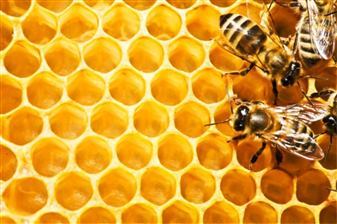
Bees produce a compound called propolis from the sap on needle-leaved trees or evergreens. When they combine the sap with their own discharges and beeswax, they create a sticky, greenish-brown product that is used as a coating to build their hives. This is propolis.
Thousands of years ago, ancient civilizations used propolis for its medicinal properties. Greeks used it to treat abscesses. Assyrians put it on wounds and tumors to fight infection and help the healing process. Egyptians used it embalm mummies.
The composition of propolis can vary depending on the location of the bees and what trees and flowers they have access to. For example, propolis from Europe won’t have the same chemical makeup as propolis from Brazil. This can make it difficult for researchers to come to general conclusions about its health benefits.
TIP : You can use Propolis rich lip balm on your lips to treat oral herpes.
Availability: In most herbal remedy stores. (e.g. SeventhWave , iHerb , Amazon )
Antibiotic Properties: Galangin which creates a sterile environment which helps boost your immune system. Propolis is primarily used for infections caused by bacteria, e.g. TB (Tuberculosis) .
Collection & Preparation: Available as a cream, oil and capsules.
Dosage: Cream = 3% ointment, capsule = 500mg per day.
Possible Side Effects: Irritation.
Contraindications: Do not take if you’re pregnant or breast feeding, or if you suffer from asthma, bleeding conditions or honey allergies.
Alternatives: Honey-based products.
Other Uses: Coryza, canker sores, nose and throat cancer, peptic ulcer disease, ear discharge, herpes, cold sores, etc.
Watch the following video on Propolis Benefits
44. Sanguinaria (Bloodroot)
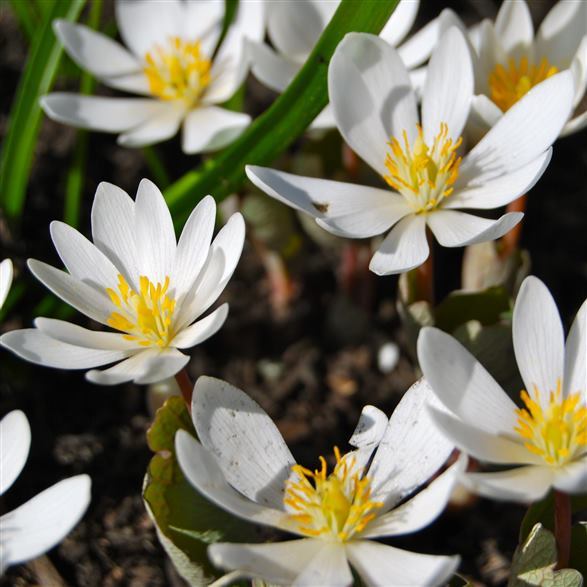
Sanguinaria is a plant alkaloid present in the root of Sanguinaria canadensis and Poppy fumaria species. It is a cationic molecule which converts from an iminium ion form at pH less than 6 to an alkanolamine form at pH greater than 7. Sanguinaria and a few other alkaloids constitute the active ingredients of most sanguinaria extracts.
Sanguinaria has been shown to possess antimicrobial, anti-inflammatory, and antioxidant properties. It has been used as an antiseptic mouth rinse and a toothpaste additive to reduce dental plaque and gingival inflammation. Sanguinaria is found to inhibit platelet aggregation induced by arachidonic acid, collagen, U46619 and sub-threshold concentration of thrombin.
TIP : Blood root is a great herbal treatment for skin conditions like warts and moles. When you apply Sanguinaria directly to the wounds, it removes the damaged tissues.
Availability: In most good herbal remedy stores. (e.g. iHerb , Amazon )
Antibiotic Properties: Alkaloids Sanguinarine, Chelerythrine, Protopine and B. homochelidonine which actually inhibits the bacteria before killing it. Sanguinaria is primarily used for oral problems .
Collection & Preparation: Available as a tincture, a powder, toothpaste and a fluid.
Dosage: Tincture – 10-15 drops, powder = 1 grain and fluid = 10–30 drops daily.
Possible Side Effects: Nausea, vomiting, drowsiness, vertigo, burning in the stomach, low blood pressure.
Contraindications: Do not use if you suffer from intestinal problems or glaucoma. Avoid if pregnant or breast feeding.
Alternatives: N/A.
Other Uses: Croup, bronchitis, skin problems, warts, nasal polyps, achy joints, gum disease, poor circulation, high blood pressure, headache, cancer, etc.
Watch the following video on Plant Portrait – Bloodroot
45. Tea Tree
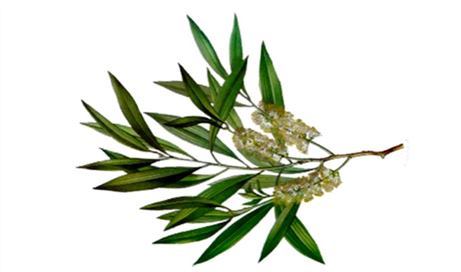
Tea Tree Oil (also known as Melaleuca ) is a natural antibacterial disinfectant that was commonly used as a general antiseptic by the aborigine tribes for thousands of years. More recently, the scientific community has confirmed that Tea Tree Oil has tremendous medicinal benefits. It is light yellow oil that has a scent similar to nutmeg, and it is produced by steaming tea tree leaves and then squeezing the oil out.
It has wonderful properties that make it a popular natural agent for curing all three types of infectious organisms: fungus, bacteria, and virus. More importantly, it is known to effectively fight a number of infections that are resistant to some antibiotics. Therefore, Tea Tree Oil is an excellent natural remedy for hundreds of bacterial and fungal skin ailments such as acne, abscess, oily skin, blisters, sun burns, athlete’s foot, warts, herpes, insect bites, rashes, dandruff and other minor wounds and irritations.
TIP : Tea tree oil is great for curing warts. Soak a cotton ball in tea tree oil and gently press it on the wart. Repeat daily for 8-10 days.
Availability: Most good herbal remedy stores. (e.g. Holland and Barrett , iHerb , Amazon )
Antibiotic Properties: Melaleuca alternifolia which ‘punch holes’ in bacteria to kill them. Tea Tree Oil is primarily used for skin issues .
Collection & Preparation: Available as an essential oil. This oil can be made by distilling the leaves.
Dosage: The percent of the oil depends on your issue – please consult with your doctor. Always dilute tea tree oil in some carrier oil in the ratio of 1:10.
Possible Side Effects: Itchiness, irritation, redness, drowsiness, stomach upset.
Contraindications: Do not use if you’re pregnant or breast feeding. Avoid using around eyes, swallowing or absorbing it.
Alternatives: N/A.
Other Uses: Inflamed gums, abscess, laryngitis, cough, cold, candidiasis, acrochordon, dandruff, plaque, etc.
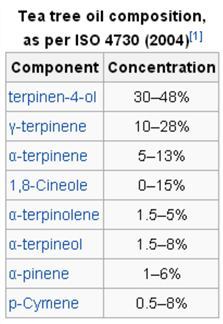
Watch the following video on Tea Tree Oil Benefits
Of course, there are many amazing herbs with antibiotic uses and other health benefits. This list is just the start of the things that can help you! Further research can assist you if it is an area that interests you. There are many online resources with information, some of which are listed later in this guide.
Tip : iHerb.com has most of the herbal antibiotics you could be looking for very affordable prices. Make sure to take advantage of 5$ off for the first order with the following voucher code: WCR736 .
Watch the following video on 10 Most Reliable Herbs for Good Health
CHAPTER 7
LITTLE KNOWN HERBAL REMEDY RECIPES
This chapter is going to look at a few herbal remedy recipes for common ailments that you can create at home.
1. Vitamin C Pills
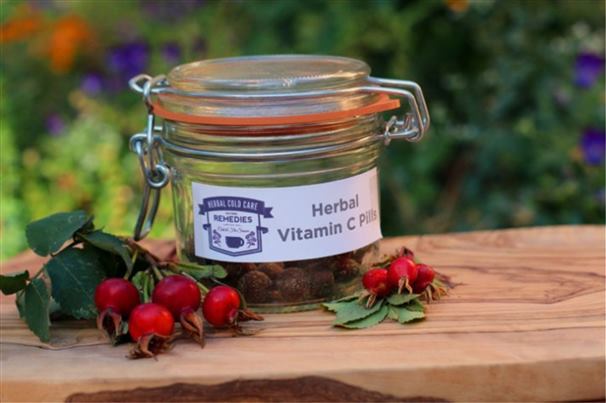
Used for:
Vitamin C tablets are useful for helping to boost the immune system and fight off colds and flu-like symptoms.
Ingredients:
- 1 tablespoon of rose hip powder (the fruit of a rose plant which has a high vitamin c content)
- 1 tablespoon of amla powder (an Indian gooseberry which has strong anti-bacterial properties)
- 1 tablespoon of acerola powder (a Barbados cherry which is great for stomach discomfort)
- Honey
- Orange peel powder. (optional). (orange is a citrus fruit and its peel is often used for flavor)
Instructions:
Mix together the powdered herbs, breaking up any clumps. Pour a few droplets of slightly warmed honey into the powdered mix. Stir, add a few more droplets and stir again. The mixture wants to hold together, but not too be too moist or sticky.
Once the powders are mixed with honey, form the mixture into pea sized balls. These can then be rolled into the orange powder if you’ve selected to use it. The mixture should make 45 balls. Store these in an airtight container and they should last a very long time. You can take 1 – 3 of these per day.
2. Hyssop Oxymel
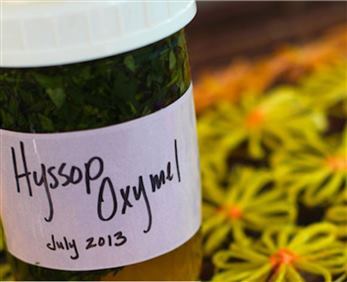
Used for:
Great for colds, flu and bronchitis.
Ingredients:
- Hyssop (fresh or dried) (a herbaceous plant with antiseptic and expectorant properties)
- Honey
- Apple Cider Vinegar (vinegar made from cider that is great for weight loss and heart health)
Instructions:
Fill a jar lightly with chopped fresh hyssop. (Only half fill it if you’re using dried hyssop). Next fill the jar 1/3 of the way with honey, then fill the rest of it with the apple cider vinegar. Let it sit for 2 – 4 weeks in the sealed jar before straining.
For a congested cough, you can take 1 – 2 teaspoons of this remedy every hour. Keep the Hyssop Oxymel in the fridge for better preservation.
Watch the following video on DIY Herbal Infusions
3. Oatstraw Infusion
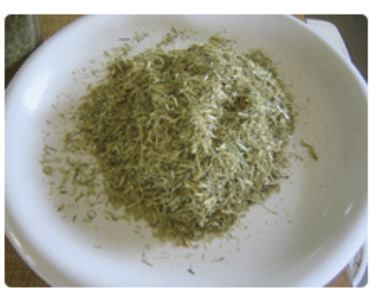
Used For:
This oatstraw infusion is great for its calming, stress relieving effect.
Ingredients:
- 1oz of the oatstraw herb (comes from avena satvia which has long lasting energy effects)
- Boiling water
Instructions:
Put the 1oz of oatstraw into a quart sized jar and pour boiling water over the herb before capping it with the lid. Sit for 4 – 6 hours to pull the minerals into the solution, then strain it. If you choose to, you can add a little extra to your mixture once it’s made; lavender, lemon verbensa, rosemary, etc.
Oatstraw is a great base for frozen concentrates, lemonades and juices. You can use it to create ice cubes or ice lollies if you want a variation.
4. Lemon Balm Home Remedy
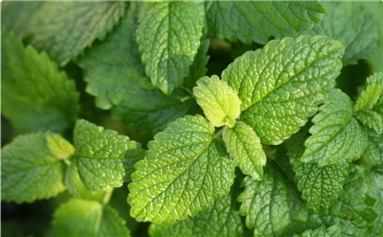
Used For:
Perfect for cold sore sufferers as a natural way to get help prevent and get rid of the virus’s effects.
Ingredients:
- 2 lemon balm tea bags or 2 teaspoons of dried lemon balm
- 1 cup of boiling water
Instructions:
Steep the lemon balm in the boiling water for 10 – 15 minutes before straining. Saturate a cotton ball in the mixture before dabbing it onto the cold sore at least 4 times a day. You can also drink a few cups of lemon balm tea a day to help eliminate the virus from your body.
5. Meadowsweet Elixir

Used For:
This is a fantastic home remedy for pain relief.
Ingredients:
- 100g of meadowsweet flowers (a European flower that is known as ‘the stomach corrector’)
- 40ml of 50% vodka (a distilled alcoholic drink that consists primarily of water and ethanol)
- 100ml glycerin (a sugar alcohol compound often used in elixirs and skin care products)
Instructions:
Place the meadowsweet flowers in a jar, and then add the vodka and glycerin. Shake well and let in macerate for 4 – 6 weeks. Check the mixture often as sometimes the flowers will soak up the alcohol and glycerin so that the liquid no longer covers the herb. In this case, you either need to use a stone to weigh them down, or add more alcohol. After the 4 – 6 weeks you need to strain the mixture ready for use.
6. Elderberry Gummy Bears

Used For:
These vitamin C treats are good for an immune system boosting treat that looks after your well-being.
Ingredients:
- 50g of dried Elderberries
- 30g of dried rosehips
- 15g of cinnamon chips
- 7g of liquorice root
- 0.5g of freshly ground pepper (a flowering vine which is often used for seasoning)
- 3 cups of apple cider
- 3 tablespoons of gelatin (derived from collagen and used as a gelling agent in food)
Instructions:
Place all of the ingredients (minus the gelatin) into a medium sized saucepan. Bring the mixture to simmer and continue to simmer for 20 minutes. Strain – squeeze well to extract the juice.
Measure out 2 cups of the juice (add more apple cider if necessary to make the mixture fill 2 cups). Put 1/2 a cup into the fridge, then once it’s cold, sprinkle the gelatin over it and let it sit for one minute.
Heat the rest of the mixture – bring it to a simmer, then pour the hot juice over the cooled mixture and gelatin, stirring briskly with a whisk. Continue to mix until the gelatin is completely dissolved. If you want to sweeten this up more, add sugar or honey.
Pour this mixture into molds and refrigerate. Once they have hardened, they are ready to eat. Eat 1 – 3 gummies per day, and keep them stored in a sealed container in the fridge.
7. Bitter Digestive Pastilles
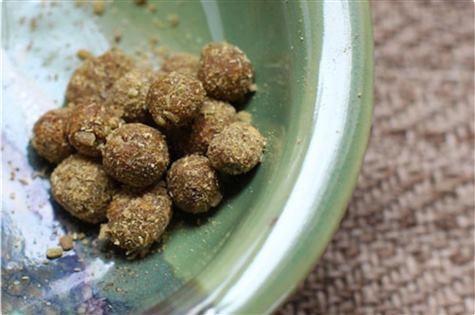
Used For:
For sufferers of bitter deficiency syndrome or for promoting a healthy digestive system.
Ingredients:
- 1/2 teaspoon of angelica root powder (a European herb used for gastrointestinal tract disorders)
- 1/4 teaspoon of gentian root powder (grows in Alpine habitats and treats digestive issues)
- 1/4 teaspoon of coriander powder (great for promoting healthy digestion)
- 1/4 teaspoon of orange peel powder
- 1/8 teaspoon of freshly ground black pepper
- 1 teaspoon of honey
- 1 teaspoon of fennel seed powder (contains anethole and polymers which help stomach issues)
- 1/8 teaspoon of fine sea salt (primarily used for flavor)
Instructions:
Mix all of the powdered herbs – except the fennel seed powder and the sea salt – in a bowl. Then, gently heat up the honey in a small saucepan just until it is thinner and more syrupy. Little by little pour the honey into the powdered herbal mixture, constantly stirring until it can be molded into pea shaped balls.
Roll these balls into the fennel seed powder and sea salt to create a coating. Store these in an airtight container and enjoy one 15 minutes before each meal.
Watch the following video on Herbal Remedies you make at Home
8. Echinacea Remedy

Used For:
This remedy is perfect for canker sores.
Ingredients:
- 2 tablespoons of Echinacea tincture
- 2 tablespoons of Lemon Balm tincture
- 2 tablespoons of Sage tincture
Instructions:
Mix equal parts of the three tinctures together in a dropper bottle. Swish a dropper full of the mixture around your mouth 2 – 3 times a day.
9. Homemade Mouthwash
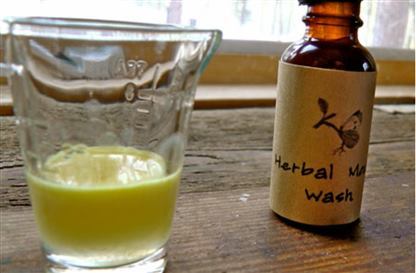
Used For:
This mixture is a great way to keep your mouth fresh and healthy.
Ingredients:
- 1/2 ounce of Echinacea tincture
- 1/4 ounce of Oregon Grape Root tincture
- 1/8 ounce of Plantain tincture (generally used for cooking due to its sweet taste)
- 1/8 ounce of Propolis tincture
Instructions:
Mix all of the tinctures together in a bottle. Place 30 – 60 drops into a mouthful of water. Swish it in your mouth for 20 – 30 seconds.
10. Chamomile Remedy
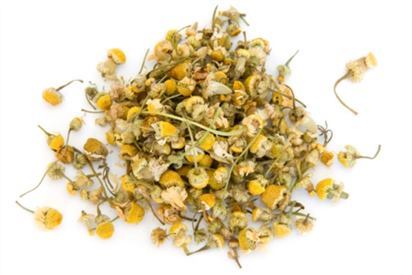
Used For:
The remedy is brilliant for clearing a stuffy nose. Repeat as needed.
Ingredients:
- 2 handfuls of dried chamomile flowers/10 chamomile teabags (a relaxing, rejuvenating herb)
-Boiled water
Instructions:
Bring 2 quarts of water to a boil, then turn off the heat and put in the dried chamomile flowers. Cover the pot and leave for 15 minutes before placing it on a heat pad. Place a towel over your head as you lean over the pot to breathe in the steam – unblocking your nose.
Watch the following video on Make your own Herbal-Infused Oil
CHAPTER 8
Herbal Remedies for Common Ailments
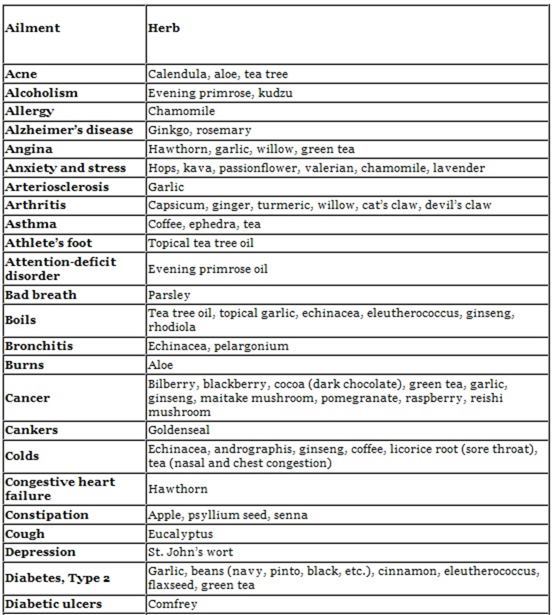
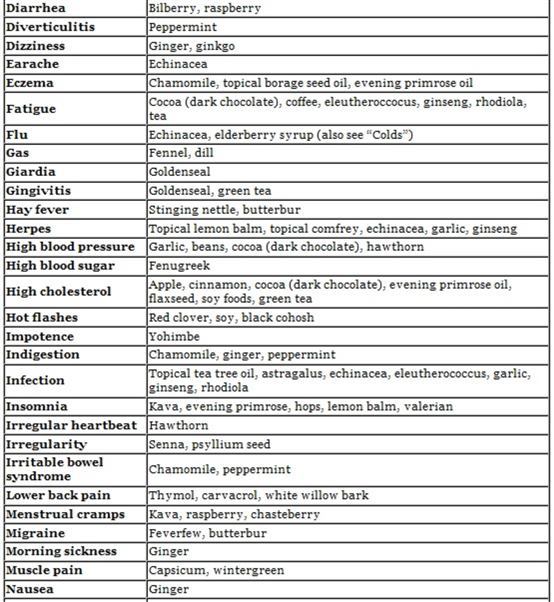
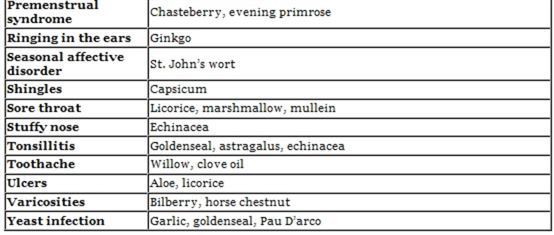
SOURCES
FAQ
1. Is it okay to take herbal supplements along with antibiotics?
Although you must only take antibiotics when you really need them, there are times when only prescription medication will work. In this instance, you may wish to continue to take herbal remedies to assist your immune system in fighting off the bacteria. Probiotics supplements are great for reintroducing good bacteria, but you must consult your doctor first.
2. Are there any plants in the US with antibiotic qualities that can be used externally?
There are many plants that grow in the US with antibiotic qualities, and a selection of these can be used externally. A list of US grown herbs can be found here .
3. Are there any herbal remedies for (almost) chronic chest infections?
The official advice from NHS suggests that to help your body fight off the infection by:
- Getting plenty of rest.
- Drinking lots of fluid to prevent dehydration and to thin the mucus in your lungs, making it easier to cough up.
- Treating headaches, fever and aches and pains with painkillers such as paracetamol or ibuprofen.
- Drinking a warm drink of honey and lemon to relieve a sore throat caused by persistent coughing.
- Raising your head up with extra pillows while you are sleeping to make breathing easier.
- Using an air humidifier or inhaling steam from a bowl of hot water to ease your cough (hot water should not be used to treat young children with a cough due to the risk of scalds).
- Stopping smoking (if you smoke).
There are many online resources for finding suitable home remedies for anything, including chronic chest infections. Below is an example for treating Bronchitis :
- Mix half a teaspoon of ginger with half teaspoon each of pepper and cloves. This combination can be blended with a little honey to make it more palatable or had as a tea infusion. There are compounds in ginger, pepper and cloves that help reduce fever and improve the immunity of the person suffering from bronchitis.
- Add half a teaspoon of turmeric to a glass of milk and drink this thrice a day. This natural remedy for bronchitis in children is more effective when taken on an empty stomach.
- Infuse spinach leaves in water and add a pinch of honey and ammonium chloride. Drink this as a natural expectorant to loosen phlegm and reduce chest pain.
- Powder the kernels of almonds and mix this powder in a glass of orange juice. Drink this every night before sleeping.
- Use the powder of dry chicory root mixed in honey. You can get chicory root powder in most herbal or alternative medical stores. When taken thrice daily, this is one of the most effective chronic bronchitis home remedies.
- If you do suffer from shortness of breath or tightness in the chest, rubbing turpentine over the chest can offer some much needed relief.
- Warm salt water gargles can also help to loosen the phlegm and reduce constriction that you may feel in your chest.
- The best way to treat bronchitis is by getting adequate rest. Doctors may prescribe an over-the-counter cough syrup to reduce the mucus build up in your lungs. Cough drops can also reduce a sore throat but won’t really stop the cough. In cases of chronic bronchitis or if you already suffer from a heart or lung disease, more medical attention and treatment will be necessary. Speak to your doctor immediately to prevent further medical complications.
4. What’s the best natural antibiotic alternative to treat Paronychia?
Paronychia is a common skin infection just next to the nail. Antibiotics are often prescribed for this, but there are natural alternative available. Collodial Silver, Neosporin and Sonoran are often recommended.
5. What is the most effective plant-based herbal antibiotic?
The most effective herbs are as follows:
- Grapefruit Seed Extract
- Echinacea
- Goldenseal
- Garlic
- Cranberry
- Uva Ursi
- Honey
All these herbs have been examined in detail in the ‘ Top 45 Valuable Herbs’ chapter.
6. How are antibiotics made and is it possible for a person to make their own?
Antibiotics are made by the process of fermentation. This is described in detail in the ‘ Usage of Antibiotics ’ chapter. It is possible for people to make their own antibiotics at home, and a few suitable recipes can be found in the ‘ Herbal Remedy Recipes ’ chapter.
7. Can I get rid of strep throat using herbal remedies instead of antibiotics?
Strep throat is a bacterial throat infection that makes your throat feel sore and scratchy. Herbal remedies are actually more beneficial for curing strep throat than antibiotics because the solution is more permanent. It suggests garlic, honey and cayenne pepper as the best herbs for this issue.
8. Are there any herbal remedies for acne?
There are many herbal remedies that are useful for acne. It is suggested mixing the following ingredients, some of which need to be mixed with water to form a face mask:
- Baking Soda
- Apple Cider Vinegar
- Coconut Oil
- Tea Tree Oil
- Egg Whites
- Lemon Juice
- Garlic (rub the slices on your skin).
- Ice Cubes
- Cornstarch
- Aloe.
9. What is the best herbal treatment for cough?
There are lots of herbal remedies for coughs, but these are considered as The Top 6 :
- A mix of honey, coconut oil and lemon juice.
- Thyme tea.
- Black pepper and honey tea.
- Lemon.
- Liquorice.
- Ginger.
10. What’s the best herbal medicine for liver problems?
Herbal medicine has been used to help with liver problems for many years. Our modern day life styles put a lot of pressure on our liver, which is a problem because our liver is used for many vital functions - digestion, produces plasma proteins, stores iron, regulates the clotting of blood, synthesizes cholesterol, stores glucose as glycogen, regulates the levels of amino acids in blood, is involved with clotting of blood, removes toxins from the body and produces immune factors that help prevent infections.
To keep our liver healthy, herbal remedies can be extremely beneficial. The following are suggested:
- Amla/Gooseberry – These are a great source of Vitamin C, and are used to help a sluggish liver.
- Jethimad/Liquorice – These herbs are great for people who suffer from non-alcoholic fatty liver disease.
- Amrith/Guduchi – These are considered to have rejuvenating properties and help clear toxins out of the liver.
- Haldi/Turmeric – Filled with valuable antioxidants and helps protect your liver.
- Flaxseeds – These help ease the strain on your liver.
- Vegetables – Beet, cabbage, carrots, broccoli, onions and garlic are great for helping the liver secrete greater concentrations of enzymes.
11. What is a good herbal remedy for allergies?
There are many brilliant herbal remedies that are suitable for allergies. The following are considered as the most effective:
- Butterbur – Blocks the chemicals hat block up nasal passages.
- Quercetin – Works as a cell stabilizer.
- Stinging Nettle – Helps at the first sign of an allergic reaction.
- Bromelain – Reduces nasal swelling and thins mucus.
- Phleum Pratense – Reduces pollen allergy symptoms.
- Tinospora Cordifolia – Reduces sneezing, itchiness and nasal discharge.
12. Is there a way to cure eczema or dermatitis with herbal remedies?
Skin conditions such as eczema or dermatitis are cured easily with herbal remedies. In fact, there are so many available:
- Lactic acid bacteria as probiotics reduce the risk for infantile eczema.
- Evening primrose oil has therapeutic value in the treatment of atopic eczema.
- Exclusive breastfeeding reduces the incidence of atopic dermatitis in childhood.
- Topical vitamin B-12 may be a treatment option in children with eczema
- Fish oil supplementation in pregnancy and lactation may decrease the risk of infant allergy.
- Omega-3 fatty acids in breast milk protect against atopic eczema and allergic sensitization in infancy.
- TGF-beta in colostrum may prevent the development of atopic disease during exclusive breast-feeding and promote specific IgA production in human subjects.
- Vitamin D deficiency is higher among children with asthma, allergic rhinitis, atopic dermatitis, acute urticaria, and food allergy.
- Drinking deep-sea water restores mineral imbalance in atopic eczema/dermatitis syndrome.
- Oat and rice collodial grain suspensions may safely be used as an adjunct in the management of mild atopic dermatitis in children under 2 years of age.
- Collodial oatmeal may have value in the treatment of atopic dermatitis and other inflammatory and histamine-related conditions and may allow for reduced use of corticosteroids and calcineurin inhibitors.
- Blackcurrant seed oil is well tolerated and transiently reduces the prevalence of atopic dermatitis in newborns.
- Borage oil is effective in treating atopic dermatitis.
- Topical St. John’s wort cream may improve atopic dermatitis.
- Vitamin E and D supplementation improves symptoms of atopic dermatitis.
- A fermented whey protein and lactic acid bacteria complex has anti-inflammatory potential in an atopic dermatitis model.
- A traditional Korean fermented soybean food exhibits anti-inflammatory activity which may have therapeutic value in allergic conditions such as asthma and atopic dermatitis.
- Kimchi contains a probiotic, Lactobacillus sakei, which alleviates allergen-induced skin inflammation in mice.
- Supplementation of Lactobacillus sakei in children with eczema-dermatitis syndrome is associated with a substantial clinical improvement
- Probiotic supplementation may stabilize the intestinal barrier function and decrease gastrointestinal symptoms in children with atopic dermatitis.
- Supplementation of mothers and their babies with the probiotic Lactobacillus reuteri reduces IgE-associated eczema and may reduce respiratory allergic disease later in life.
- Supplementation with L. reuteri during late pregnancy reduces breast milk levels of TGF-beta2, which may be associated with less sensitization and possibly less IgE-associated eczema in breast-fed infants.
- Lactobacillus rhamnosus GG significantly reduces eczema in the first two years of life.
- Lactobacillus rhamnosus supplementation given to pregnant mothers and their offspring during the first 6 months of life is effective in preventing atopic disease in children at high risk.
- Probiotic and prebiotic supplementation improves the symptoms of children with atopic dermatitis.
- Bathing in a magnesium-rich Dead Sea salt solution improves skin barrier function, enhances skin hydration, and reduces inflammation in atopic dry skin.
- White rose petal extract has anti-allergic and anti-atopic properties.
13. Which herbal antibiotics can be taken during pregnancy?
You always need to check with your doctor before taking herbal supplements when pregnant. Due to the lack of regulation, it is always advisable to get the opinion of a medical professional. These are considered as the safest herbal antibiotics:
- Garlic
- Coconut Oil
- Grapefruit Seed Extract
- Cranberry
- Colloidal Silver
- Shatavari
- Vitamins D, C and A.
14. How do herbal antibiotics fight bacteria?
Natural antibiotics operate in 2 primary ways. First of all, they eliminate the dangerous germs. One of the disadvantages is that they can kill some helpful bacteria as well, but that is considered a tiny price to pay if you compare the final results of the proliferation of those germs within your body. Never less, the quantity of helpful microorganisms which is wiped out tends to be exceptionally small. Additionally, their performance is far superior if you compare them with the quantity of useful bacteria killed by artificial antibiotics.
The second way in which these natural alternatives to antibiotics work is by boosting the body’s defenses. In this way, your body system will be capable of fighting back any germs and their consequences. The advantage with this strategy is that no helpful bacteria will be eradicated.
Essentially, natural antibiotics are a great way to boost your overall health and eliminate harmful bacteria from your body.
CONCLUSION
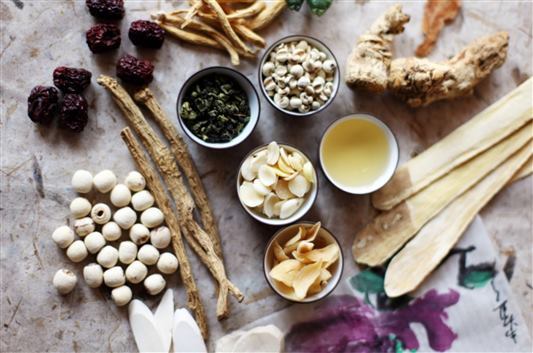
So as you can see from this book, herbal antibiotics are a great alternative to conventional medicine when it comes to helping your body fight off bacterial infections. They have fewer side effects; they have a much more wide-spread availability and ensuring that you only use traditional antibiotics when you need them, reduce the risk of antibiotic resistance.
There are many ways that you can consume these natural antibiotics. Of course, there are the tablets, medicines and oils, but there are also a lot of food, herbs and spices which can be incorporated into your everyday diet to ensure that you are always protected. After all, there can’t be any downsides to making your body healthier and more able to fight anything that threatens it! Of course, you will need to consult your doctor to confirm that any of the herbal and natural remedies are suitable for you, but once you have made the lifestyle change, you won’t want to go back.
Watch the following video on A Healthy Winter with Natural Antibiotics
ABOUT THE AUTHOR
Mary Jones became interested in herbal remedies early on in her life. After becoming frustrated with the ineffectiveness and sometimes severe side effects of synthetic remedies, she started researching whether or not natural cures could be made to the same effect, without the use of synthetic means. After dedicating years of her life to research, learning from natural remedies masters, as well as from doctors that use natural cures to help their patients, she decided it was time to share the knowledge she had gathered with the world.
One of Mary’s life goals is to make the world a better, happier place, and her writings are definitely a testament to that. She has not just kept all of her research and discoveries to herself. She has elected to share them, in a format that makes them available to just about everyone. And instead of just talking about just the unknown or difficult to find herbs as many naturalists do, she has selected remedies that anyone can make, so that every person can make themselves healthier, easily and inexpensively. Mary’s books aren’t just about theory, they are about practice; actually fighting infections and ailments naturally!
OTHER BOOKS BY MARY JONES
To view books please click the link or type the HTTP link in your web browser or search the book title on Amazon.
“Herbal Antivirals: Heal Yourself Faster, Cheaper and Safer – Your A-Z Guide to Choosing, Preparing and Using the Most Effective Natural Antiviral Herbs”















